






3012 S. Jim Redman Pkwy. (Hwy. 39 S) Plant City, FL • southsidestores.com 813-752-2379 Mon. - Sat.: 8 a.m. - 6 p.m.
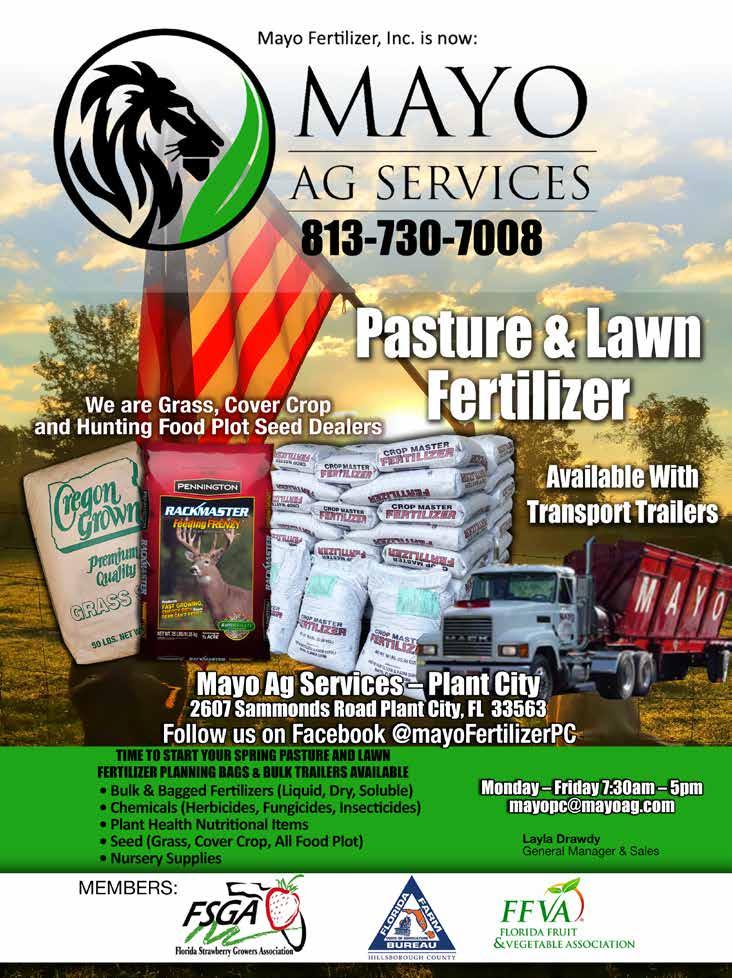
WWW.INTHEFIELDMAGAZINE.COM INTHEFIELD MAGAZINE August 2023 3 PAGE
PAGE 16
Green Thumb
PAGE 18
Fishing
PAGE 22
Rocking Chair Chatter
PAGE 24
Heat Protection for Gardeners
PAGE 25
Farms Program
Saving Water
PAGE 28
Rain Harvesting
2023 VOL. 19 • ISSUE 10
Hidden
SPENCER
New Area V Florida FFA Vice President
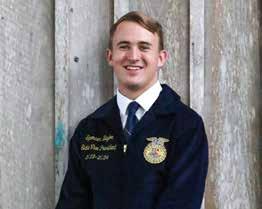
40
PAGE 30
News Briefs
PAGE 32
Harvest Croo
PAGE 35
Jamaican Cherries
PAGE 36
Future Forest
PAGE 37
Florida Farm Team Card
PAGE 38
Rain Options
PAGE 42
Salute To AG Awards
PAGE 44 John Dicks
Readers!
PAGE 47
A Closer Look
PAGE 50
Hopewell Heritage Farm
PAGE 52
Florida Strawberry Season Underway
PAGE 56 From The Scientific Field
PAGE 58
Farm Bureau
Young Farmers and Ranchers

PAGE 60
Hillsborough County Farm Bureau 305 S. Wheeler St. Plant City, FL.

Office Hours: Mon. - Fri. 8 a.m. to 5 p.m.
Insurance Services: 813-685-5673
Member Services: 813-685-9121
OFFICERS AND EXECUTIVE COMMITTEE
Dennis Carlton, Jr.....................President
Carl Bauman................Vice President
Tony Lopez..............Treasurer
Madison Astin Salter..................Secretary
DIRECTORS FOR 2021 - 2022
Dennis Carlton Jr, Carl Bauman, Madison A. Salter, Tony Lopez, Tiffany D. Randall, Jake Cremer, Brittany Coleman, Travis Council, Drew Futch, Rep. Lawrence McClure, Sammi Wilcox, Michelle Williamson, Casey Runkles, Gayle Yanes
Farm Bureau Insurance Special Agents
Valrico Office
813-685-5673
100 S. Mulrennan Rd., Valrico, FL. 33594
Tommy Hale, CLU, ChFC, CASL, CPCU Agency Mgr.
Julie Carlson, Jacob Jones
Plant City Office 813.752.5577
305 S. Wheeler St., Plant City, FL 33563
Jeff Summer
Apollo Beach Office
813.933.5440
6510 N. US Hwy 41, Apollo Beach, FL.33572
Greg Harrell, Erin Campbell
AGENCY MANAGER
Thomas O. Hale
WWW.INTHEFIELDMAGAZINE.COM INTHEFIELD MAGAZINE August 2023 4 PAGE
Kaylee Poppell, Executive Director 813-685-9121 CONTENTS
somewhere in the magazine is a No Farmers, No Food logo. Hunt for the logo and once you find the hidden logo you will be eligible for a drawing to win a FREE No Farmers
Food Sticker. Send us your business card or an index card with
name and telephone number, the number
which you
the logo and where
you
below
Magazine P.O. Box 5377 •
Hey
No
your
of the page
found
on the page
located the logo to the address
InTheField®
Plant City, Fl. 33566-0042
*Winners will be notified by phone. You Too Can Be A Winner!
PAGE 10 Endangered Species
PAGE 14 E-Verify
Recipes BAYLOR
August
Cover Photo by Images By Blair








Letter from the Editor
Publisher/Photography
Karen Berry
Senior Managing Editor/ Associate Publisher
Sarah Holt
Editor
Patsy Berry
Sales
Karen Berry
Sarah Holt
Melissa Nichols
George Domedion
Creative Director/Illustrator
Juan Alvarez
Hey Florida, can you send us some rain? It is the rainy season, right? I always remind everyone to take care when working out in the heat, but at this point, we are in the danger zone most of the day. So please, take care of yourselves when you are working outside.
It’s mid-August and the kids are back to school! Take care on the roads as the future of the country heads to the bus stops and schools. Watch where you are going. Your phone calls and texts can wait until you arrive at your destination.
The new school year means a new beginning for many. It could mean a new teacher, a new school, or new classmates, but hopefully, it means new memories that will be cherished, and friends made that will last a lifetime.
We hope students are enjoying the benefits of agriculture education. These courses educate youth on the importance of this time-honored tradition. Classes range from agriculture economics, animal science, horticulture, leadership development, and much more. Instructors help students understand the importance of agriculture and maybe, just maybe, ignite a spark of interest, opening the door for potential future careers.
We need agriculture to survive. If you eat, wear clothes, take medications, live in a house, write with a pencil, and so many more things, you need agriculture.
Until Next Month
Sarah Holt
Photography
Karen Berry
Melissa Nichols
Staff Writers
Al Berry
Sandy Kaster
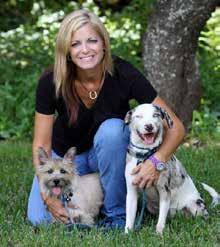
James Frankowiak
Sean Green
Contributing Writers
Woody Gore
John Dicks
Social Media
Victoria Saunders
In The Field Magazine is published monthly and is available through local Hillsborough County businesses, restaurants, and many local venues. It is also distributed by U.S. mail to a target market, which includes all of the Greenbelt Property owners, members of the Hillsborough County Farm Bureau and Strawberry Grower’s Association.
Letters, comments and questions can be sent to P.O. Box 5377, Plant City, Florida 33563-0042 or you are welcome to email them to: info@inthefieldmagazine.com or call 813-759-6909
Advertisers warrant & represent the descriptions of their products advertised are true in all respects. In The Field Magazine assumes no responsibility for claims made by advertisers. All views expressed in all articles are those of the authors and not necessarily those of Berry Publications, Inc. Any use or duplication of material used in In the Field magazine is prohibited without written consent from Berry Publications, Inc.
to you. - Numbers 6:25
Published by Berry Publications, Inc.
WWW.INTHEFIELDMAGAZINE.COM INTHEFIELD MAGAZINE August 2023 6 PAGE
STAFF
The LORD make his face shine upon you and be
gracious
Old Florida Wooded Retreat 18.54± Acres, Plant City, FL

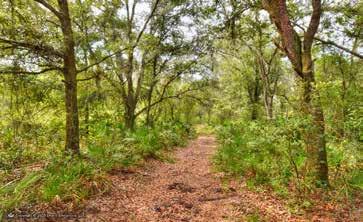
Beautiful 18.54± acres of native Florida, located on a deadend road. This current zoning is AS-0.4, which allows for 1 home per 2.5 acres. Conveniently located just far enough away from the city bustle and traffic while still in close proximity to Tampa, Brandon, and Plant City.
Sale Price: $680,000
EQUESTRIAN OASIS WITH SPRAWLING OAK TREES AND SINGLE FAMILY HOME ON 8± ACRES! Nestled under the live oaks, you’ll find this meticulously maintained 8 stall, center-aisle horse barn conveniently located in Lutz.

Sale Price: $1,100,000

WWW.INTHEFIELDMAGAZINE.COM INTHEFIELD MAGAZINE August 2023 7 PAGE Fischbach Land Company 917 S Parsons Avenue Brandon, FL 3351 Information provided on properties is as accurate as possible. Fischbach Land Company does not guarantee the accuracy thereof. All parties shall conduct their own due diligence, research, inspection, and records to come to their own conclusions. 813-540-1000 FischbachLandCompany.com Florida Land Agriculture, Development, Commercial, Industrial, Country Estates Real Estate Brokerage Services Since 2008 Reed Fischbach, Licensed Real Estate Broker Blaise Lelaulu, Licensed Real Estate Associate Melissa Raburn, Licensed Real Estate Associate
Lutz Equestrian Homestead, Lutz, FL
Ad-InTheField AUGUST2023.indd 1 8/9/23 3:33 PM
A Variety of Important Agricultural News!
 -Dennis Carlton Jr. - President
-Dennis Carlton Jr. - President
Greetings,
Our Young Farmers and Ranchers recently held their annual state meeting and our county chapter was represented. Please read the story about this event in this edition of IN THE FIELD Magazine. Our YF&R members represent the future of agriculture, and I would encourage non-members to learn more about this important group and the many opportunities it offers.
This is a reminder to our grower members that the E-Verify Requirement is now law. It requires employers with more than 25 employees to use the federal E-Verify system to verify the employment eligibility of new employees. Although Florida law has required public employers, contractors and subcontractors to participate in E-Verify since 2021, the new law, which went into effect July 1, expands the participation requirement to private employers with more than 25 employees. There’s more information on this new law in this edition of ITF, as well as an online source for additional information.
There’s another new law of importance to our industry members and that’s the Florida Farm TEAM Card for agriculture sales tax exemption. That new law provides a more streamlined process for producers to receive agricultural sales tax exemptions available in
 HILLSBOROUGH COUNTY
HILLSBOROUGH COUNTY
our state. Additionally, the new law clarifies sales tax exemptions for fencing and handling facilities. Traditional fence supplies were included in the bill passed in 2022, but electric and temporary fences, as well as handling materials, were not. The new law, which is also covered in this ITF edition, now covers those items.
Also, if you haven’t marked your calendars for our annual Hillsborough County Farm Bureau meeting on October 5 at the Strawberry Festival grounds, please do so. That’s a great opportunity for fellowship and the exchange of information that is so important to our members and our industry.
Lastly, if you are not a Farm Bureau member, please consider joining so that you can help us with our role as the “Voice of Agriculture” whether it is locally, statewide, or nationally. Please visit www.hcfarmbureau. org for more information about member benefits and opportunities for engagement.
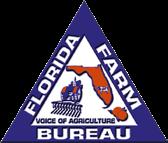 Dennis Carlton, Jr.
Dennis Carlton Jr.
Dennis Carlton Jr. - President
Dennis Carlton, Jr.
Dennis Carlton Jr.
Dennis Carlton Jr. - President
WWW.INTHEFIELDMAGAZINE.COM INTHEFIELD MAGAZINE August 2023 8 PAGE 305 SOUTH WHEELER STREET • PLANT CITY, FL 33566 • 813-685-9121
Board of Directors
Dennis Carlton Jr, President; Carl Bauman, Vice-President; Tony Lopez, Treasurer; Madison Astin Salter, Secretary; Tiffany D. Randall, Jake Cremer, Brittany Coleman, Travis Council, Drew Futch, Rep. Lawrence McClure, Sammi Wilcox, Michelle Williamson, Casey Runkles, Gayle Yanes
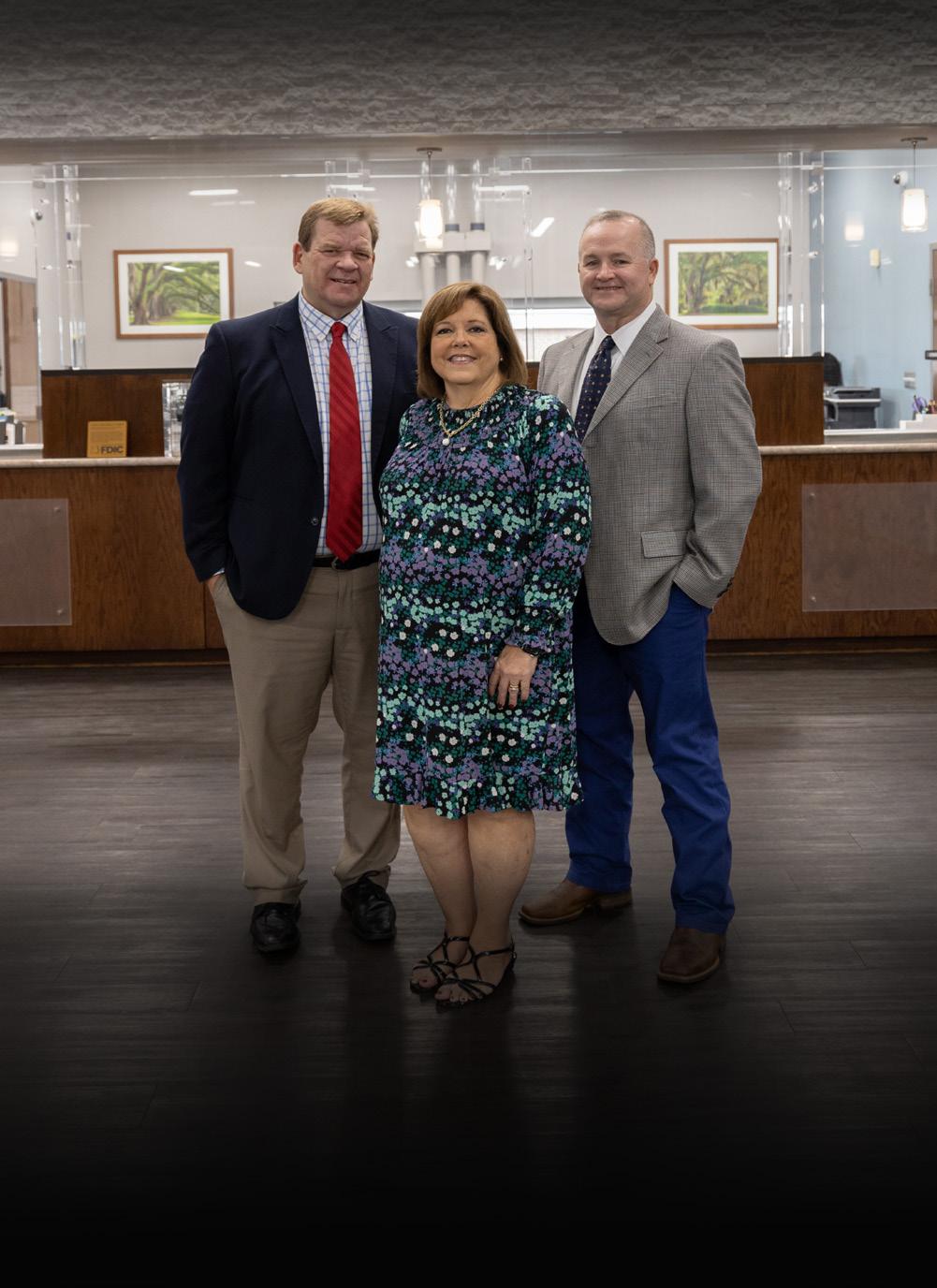

WWW.INTHEFIELDMAGAZINE.COM INTHEFIELD MAGAZINE August 2023 9 PAGE Member FDIC 509 W ALEXANDER ST. | PLANT CITY, FL | 33563 Committed to Plant City. Staffed with bankers who have deep roots in the Plant City area, our bank’s focus for over 38 years has been to serve owner-managed businesses, professional firms, and families that want a strong, local connection with their bank and banker. Come grow with us. 813.707.6506 thebankoftampa.com
Florida Bog Frog
By Libby Hopkins
The Florida Bog Frog or Lithobates okaloosae, as it’s known by its scientific name, is a rare species of frog found only in Western Florida. The Florida Bog Frog is a small and rare amphibian that can reach a snout-to-vent length of 1.9 inches.
This species was unknown to science until 1982, when it was discovered by State of Florida herpetologist Paul Moler while conducting surveys for the Pine Barrens Tree Frog.
This species has a yellowish-brown upper body, a yellow belly, brown eardrum, yellow throat, a narrow ridge that runs laterally down the back, and smaller webbed feet with larger toes.
The diet of the Florida bog frog primarily consists of small insects.
There is limited information available about the reproduction of the Florida bog frog. Florida bog frogs breed between the months of April and August. During the breeding season, bog frogs will let out loud “chucks” to attract a mate. Their calls consist of three to 21 guttural sounds developed in the back of the oral cavity with calls continuously done at five notes per second. Females lay a few hundred eggs at a time on the surface of the water. Bog Frog tadpoles turn into frogs during the spring months.
The Florida bog frog inhabits a total area of less than seven and a half miles. It is found in shallow ponds or creeks along tributaries of the East Bay, Shoal and Yellow Rivers in Santa Rosa, Okaloosa and Walton Counties in Florida.
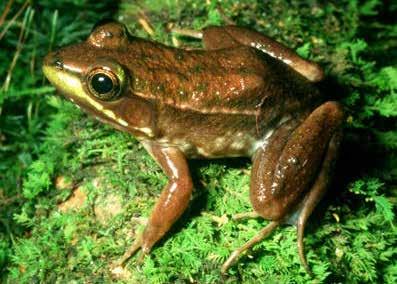
Bog Frogs occupy sluggish backwaters and seepages associated with clear, sand-bottomed streams. They prefer relatively open mucky areas that are thickly vegetated with low-lying herbaceous plant species and are especially fond of areas dominated by sphagnum.
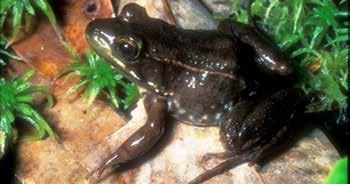
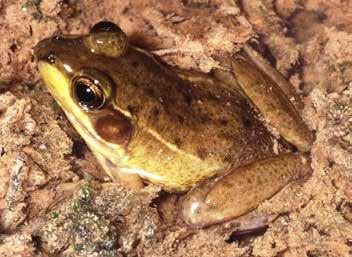
The main threat to the Florida bog frog is the degradation of its habitat. Bog frogs thrive best in early succession vegetation.
Suppression of fire will cause woody plants to invade their bog habitat causing increased evapotranspiration, which reduces seepage from the soil.
Invasive vegetation also degrades its habitat; with Chinese tallow trees being the main invasive threat. Invasive vegetation degrades habitats by out-competing endemic species for resources needed for survival.
Feral hogs also threaten the Florida Bog Frog’s habitat by digging around in seepage areas which causes destruction to the habitat. Road construction can increase silt and pollution in streams, and can also cause habitat fragmentation.
Increased predation on Florida Bog Frogs is also a threat because their habitat is shared by the southern water snake, cottonmouth and wading birds. Other threats include pathogens and parasites and the effects of global warming such as increased sea level, drought and intense storms.
The Florida bog frog is protected as a state-Threatened species by Florida’s Endangered and Threatened Species Rule. Due to its restricted range, the Florida Bog Frog will always meet the criterion. Therefore, the goal of this plan is to address and mitigate the threats to bog frogs and their habitat, which in turn should prevent further population declines, or enhance populations where practical and enhance the size and quality of bog frog habitat.
To achieve this goal, this plan identifies the following objectives: maintain or improve existing or potential habitat for the bog frog; monitor and survey for populations of bog frogs at documented and undocumented sites; protect bog frogs against unauthorized possession or take; and promote education, outreach, and collaboration among stakeholder groups.
WWW.INTHEFIELDMAGAZINE.COM INTHEFIELD MAGAZINE August 2023 10 PAGE
E ndang E r E d S p E ci ES
OUR PROFITS ARE YOUR PAYDAY
When you do business with Farm Credit, you are a member of a cooperative. When we do well, you do well. And we’ve been doing well for over 100 years.
Refinancing Buildings
Fences
Equipment
Loans for land, homes & living.


AGAZINE August 2023 11 PAGE


WWW.INTHEFIELDMAGAZINE.COM INTHEFIELD MAGAZINE August 2023 12 PAGE

WWW.INTHEFIELDMAGAZINE.COM INTHEFIELD MAGAZINE August 2023 13 PAGE
NEW E-VERIFY REQUIREMENTS NOW LAW
By Jim Frankowiak
Florida Governor Ron DeSantis has signed a new immigration bill into law. The new law requires employers with more than 25 employees to use the federal E-Verify system to verify the employment eligibility of new employees. The requirement took effect July 1, 2023. Florida law has required public employers, contractors, and subcontractors to participate in E-Verify since 2021. The new law expands the participation requirement to private employers with more than 25 employees.
E-Verify is an internet-based system operated by the U.S. Department of Homeland Security that electronically verifies employment eligibility information provided by new employees. The E-Verify system supplements, but does not replace, existing I-9 employment authorization requirements. Employer I-9 requirements remain in effect.

The system compares information provided by the employee to federal databases. Generally, E-Verify provides confirmation that the Social Security number provided by the employee matches Social Security Administration records. EVerify procedures allow employees to correct or challenge initial E-Verify determinations.
It should be noted that E-Verify can be used only for new hires. Employees hired before July 1, 2023, remain subject to the existing Form I-9 documentation requirements, but their information does not have to be entered into the E-Verify system.
The E-Verify provisions may be enforced by state agencies, including the Florida Department of Economic Opportunity, the attorney general, and the Florida Department of Law Enforcement. Employers must provide documentation of employment eligibility to these agencies upon request.
Beginning July 1, 2024, if the Florida Department of Economic Opportunity determines that an employer has failed to comply with the E-Verify requirements, the employer will be given 30 days to correct the noncompliance. A fine of $1,000


per day may be imposed if three violations occur in any 24-month period. Violations may also result in suspension or revocation of state licenses, permits, registrations, and other forms of authorization required by law.
The new law imposes separate civil and criminal penalties on employers that hire individuals without work authorization, in addition to existing federal civil and criminal penalties. So employers may be penalized by the state of Florida for failure to participate in E-Verify and for employment of unauthorized individuals, and may also be penalized by the federal government for unauthorized employment. Other provisions of the new law, in particular those relating to the validity of driver’s licenses issued by other states, immigration status data collection requirements for hospitals, and criminalization of interstate travel with noncitizens, may be challenged on federal preemption grounds, but the E-Verify provisions are expected to stand.
Florida employers with more than 25 employees can enroll online at: e-verify.gov/employers/enroll-in-e-verify.

WWW.INTHEFIELDMAGAZINE.COM INTHEFIELD MAGAZINE August 2023 14 PAGE









WWW.INTHEFIELDMAGAZINE.COM INTHEFIELD MAGAZINE August 2023 15 PAGE
A PASSIONATE GREEN THUMB
By Libby Hopkins
Destiney Tomlinson of Plant City is a 23-year-old young lady who is passionate about growing whatever her green thumb can get a hold of and anything else that piques her interest.


“Growing up, I actually took three years of technology and one year of digital art in school,” Tomlinson said. “Nevertheless, I was raised by a family that included cattlemen, gardening women, and more. My grandparents owned livestock alongside our family garden, together we would tend to our small family farm which supplied us with life lessons, wisdom, lots of loving moments, and of course, an abundance of homegrown, cooked meals.”
Those days have stuck with Tomlinson. This is the reason why she and her husband, D.J. Tice, started their own business, Nitty Gritty Greens. “We live on his parent’s family farm with cows, pigs, chickens, and a donkey,” Tomlinson. “We now have many experiences similar to what I described above regarding my own youth spent on a small-scale farm. We enjoy learning about many branches of farming/agriculture and plan on getting more involved as time persists.”
In October of 2022, the young couple became very intrigued by the thought of growing microgreens. “Since I, personally, am already a huge plant enthusiast, especially any kind of edible plant, I was naturally drawn to microgreen’s quick harvesting times, and nutritional facts and I found them visually pleasing,” Tomlinson said. “We loved the idea of getting to grow itty bitty, green powerhouses, not only for ourselves but for wonderful folks around us as well. Once we began to truly discover the plethora of health benefits microgreens contain, we were even keener to the idea of growing, selling and sharing our abundance of greens eventually.”
By April of this year, their vision for their small business had strengthened to the point of them finally taking the steps towards transforming it from a daydream into a reality. “Since then, we have obtained our LLC, set up a workspace, experimented with seeds, lights, etc, along with learning way more than we had anticipated,” Tomlinson said. “We decided on the name Nitty Gritty Greens along the way because we believe that we should all dig a little deeper into the things that surround us to truly understand what the ‘essence’ of these things may be; whether it is a conversation, plants, or even life itself. As two individuals with a small, local business we still have so much more to discover along with accomplish. We want to provide for our community in more ways than just one, this is only the beginning for us.”
Tomlinson and her husband love the process of growing microgreens. “I mostly enjoy the experimentation of it all, the process and of course the little bit of taste testing I have gotten to do so far,” Tomlinson said. “I love witnessing growth firsthand, especially in the plant realm. When I am gardening or harvesting, I feel extremely grounded in myself, in my surroundings, and in my spirituality. Any produce or greens I have grown so far has fulfilled me with a deep sense of purpose, even if it is only what seems like a few seeds sprouting. These are things I have yet to experience through other hobbies or mediums of mine over time.”
The couple hopes to share their journey with others and they feel encouraged to go after whatever green, good endeavor they may have envisioned, too. “We look forward to connecting with and serving this amazing community of ours,” Tomlinson said. “May the fruits of our labor feed plenty and lead to prosperity to for us to all share in the long haul.”
WWW.INTHEFIELDMAGAZINE.COM INTHEFIELD MAGAZINE August 2023 16 PAGE
Keeping things local is very important to Tomlinson and her husband. “For us, keeping local businesses intact, thriving and supported is extremely important to us,” Tomlinson said. “We aspire to achieve a lot on a local scale and to remain humble and kind, regardless of how much growth may present itself. We look forward to offering our community healthy, fresh produce year-round and being able to connect with others on a personal level through fostering real customer care. We are very fond of our hometown and pray we can bring a positive impact in a multitude of ways, not just one. We would not be who we are today without Plant City and the folks who live here.” If you would like to learn more about Nitty Gritty Greens, you can visit their Facebook page at Nitty Gritty Greens

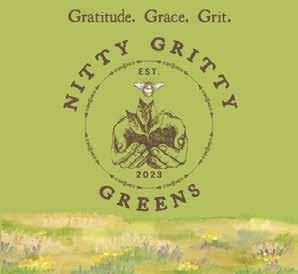

WWW.INTHEFIELDMAGAZINE.COM INTHEFIELD MAGAZINE August 2023 17 PAGE
If You’re Keeping Fish - Keep Them Fresh

 Capt. Woody Gore
Capt. Woody Gore
One of the simplest things you can do is keep your fish in the freshest condition from the time caught until served on the dinner plate, and what a difference it makes in the taste.
We Have A Right To Request Involvement in the Management of Our Fisheries.
Recreational anglers always seem ready to jump up and down about attempts to reduce their rights to catch a mess of fish. Then why do those same anglers on the bandwagon jumping or jumping up and down on their soapboxes voicing their opinions bring home repulsive, inedible spoiled fish, especially in the summer?


For this reason, we must continue demanding we reserve some of our fishery for recreational anglers to have a share of fish for personal consumption. Doing this requires stopping the commercial lobbyist from controlling our fish stocks. We must continue having a voice in our fishery. And when it comes time to vote, ask each political candidate you're thinking of voting for where they stand on our fishing and environmental topics. If you don't get the correct answers, challenge them, and if they can't support the same issues important to you, do not vote for them.
State and local officials already manage where, when, and how we can fish and continually change species, catch limits, size, and often seasonal limits. And yes, we've learned to live with and abide by these because we enjoy fishing and occasionally eating a few for dinner. But still, we cannot forget to protect the freshness of fish or anything else we plan on eating. We must ensure that what we keep is in prime consumable condition.
Simply tossing them in a fish box without ice or a non-circulating livewell is not the answer. When you get to shore several hours later, you have a spoiling mess on your hands.
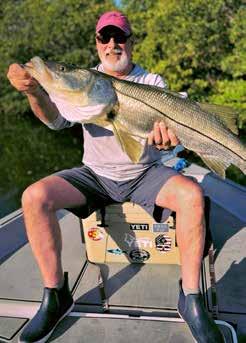
It stands to reason that if we're not going to do it right, do not. Perhaps we should be practicing catch and live-release and protecting our incredible resource.
You can stop by the local fish market for a nice piece of fish or fresh seafood if you're not keeping fish for dinner. But remember that buying whole fish, fillets, or other seafood can be tricky to select the freshest. So, if you're unsure how to make an informed decision, only check out the World Wide Web. You can find plenty of tips on how to pick fresh everything, including fish and seafood. It tells you exactly what to look for when making your choice. By far and away, the most significant bonus will be in the taste. There is little compared with the taste of fresh fish or seafood. For me, that is one of the real joys of fishing.
Despite the problems in other fisheries, ours is fantastic. Compared to other places in the world. The ability to take to the sea with the realistic anticipation of hooking into a nice catch is one of the things that make our area unique.
Keeping Folks Happy
Years ago, I discovered the three key ideas to customer service. 1.) People quickly forget what you say, 2) They never recall what you do, but 3) They always remember how you made them feel. So, I incorporated this idea with my charter service, and we ended up with exciting, fun fishing charters, resulting in a lifetime of memories and excellent customer service. My charter service is and always will be about customer appreciation.
WWW.INTHEFIELDMAGAZINE.COM INTHEFIELD MAGAZINE August 2023 18 PAGE
Capt. Woody Gore (www.captainwoodygore.com)
is the area’s number one charter service. I went over 25 successful years guiding and fishing folks in Tampa, Clearwater, and St. Petersburg. Single Boat, Multi-Boat, and Group Charters are all the same. With years of organizational experience and access to the area’s most experienced captains, we can arrange and coordinate any size group, outing, or tournament. Website www.captainwoodygore.com Email fishing@captainwoodygore.com



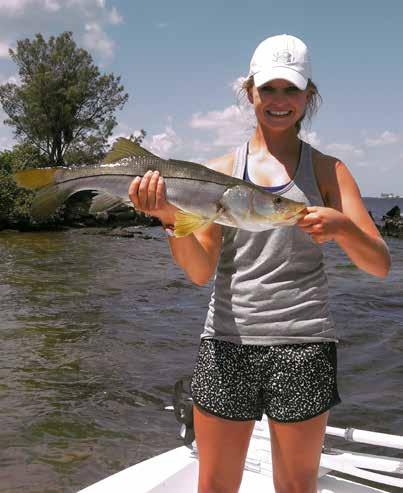

WWW.INTHEFIELDMAGAZINE.COM INTHEFIELD MAGAZINE August 2023 19 PAGE Call me, and let’s go fishing. Captain Woody Gore’s Guide Service Cellular-Text
813-477-3814
Give Him a Call, and Let’s Go Fishing.

WWW.INTHEFIELDMAGAZINE.COM INTHEFIELD MAGAZINE August 2023 20 PAGE
On a major league baseball diamond, the distance across the infield from the back top of home plate to second base is 127 feet, 3 3/8 inches.

In springtime, a wild male turkey’s head can turn a brilliant red, white or blue in a matter of moments.
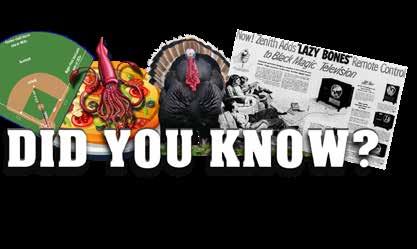
A ten-gallon hat does not hold ten gallons. It holds about three quarts.

Squid is the number one pizza topping in Japan.
President Thomas Jefferson despised formal affairs and would often greet foreign dignitaries while wearing pajamas.
Zenith created the first TV remote control in 1950. It was called “Lazy Bones.”
Yahoo! Is an acronym which stands for “Yet Another Hierarchical Officious Oracle.”
WWW.INTHEFIELDMAGAZINE.COM INTHEFIELD MAGAZINE August 2023 21 PAGE
YOUR AROUND TOWN SPONSOR

Left Handed People
I have always been a southpaw, and my handwriting is terrible. Thank goodness for the typewriter. My left-handed writing is used mostly to pay our monthly bills.
On a more positive note, right-handed people use the left side of their brains. Left-handed people use the right sides of their brains. I guess that means only left-handed people are in their right mind.
There’s no denying it, left-handers are the odd men out. Sure, lefties make up about 10 percent of the population, but, frankly, it seems like society has forgotten about them with right-handed gadgets, awkwardly designed desks, cooking tools that fit comfortably in your right hand (now that’s just wrong!).
What causes someone to become a southpaw? Scientists aren’t exactly sure, but research points to a complex collaboration between genes and environment. While no exact set of “leftie genes” have been discovered, people who dominantly use their left hands do have more left-handed family members. And researchers have found different brain wirings in righties vs. lefties.

But no matter what it is that drives someone to use their left paw, science has also uncovered a particular set of personality traits that left-handed people tend to have. So for all of
you lefties, leftie-loving righties and ambidextrous folks out there it’s time to brush up on your left-handed knowledge and help put an end to leftie discrimination once and for all.
Being left-handed puts me in the minority, but at least I am in good company. Famous people and celebrities such as Ronald Reagan, George Bush, Bill Clinton, Dr. Albert Schweitzer, Jay Leno, Mark Twain, Natalie Cole and Whoopie Goldberg were/are left-handed. Men are one-and-half-times more likely to be southpaws than women.
I found some interesting facts about being left-handed. The nails on the left hand tend to grow faster than on the right hand. The Egyptians thought is was good luck to enter a house left foot first. Of the five people that designed the Macintosh computer, four were left-handed. Benjamin Franklin signed the Declaration of Independence and the Constitution with his left hand.
A few years back Burger King published a full page advertisement in the April 1st edition of USA Today announcing the introduction of a new item to their menu: a “Left-Handed Whopper” specially designed for the 32 million left-handed Americans. According to the advertisement, the new whopper included the same ingredients as the original Whopper, but all the condiments were rotated 180 degrees for the benefit of their left-handed customers. The following day Burger
WWW.INTHEFIELDMAGAZINE.COM INTHEFIELD MAGAZINE August 2023 22 PAGE
Sponsored by:
HOPEWELLFUNERAL.COM FAMILY OWNED AND OPERATED SINCE 1971
Editor’s Note: This Rocking Chair Chatter was originally printed in the August 2014 issue
King issued a follow-up release revealing that the Left-Handed Whopper was a hoax, and thousands of customers had gone into their restaurants to request the new sandwich. At the same time, according to the press release, “many others requested their own ‘right-handed’ version.”
Believe it or not the farming industry has a lot of left-handed equipment. Left-handed plows, hoes, and many more. They even make a left-handed sawmill!

Have you ever noticed while sitting on the pot that 95% of the time the toilet roll holder is on the right side of you and so close you can barely unwind it?
Not sure who named it, but there is a town in West Virginia named Left Hand. It has only one service station and more than 200 graveyards within 20 miles. Looney Cemetery is one of the oldest on the side of a mountain. Over the years some of the land has eroded away sending some of the buried down the side of the mountain.
According to ABC News, lefties “are more likely to be schizophrenic, alcoholic, delinquent, dyslexic, and have Crohn’s disease and ulcerative colitis, as well as mental disabilities. They’re also more likely to die young and get into accidents.” An indirect consequence of that fun little tidbit is that lefties are also far more qualified to make a joke about all those things. And doesn’t who a good dyslexia joke love?
Getting out of bed with the left foot first means that you will have a bad day and be bad tempered, i.e. getting out of bed on the wrong side. A ringing in the right ear means that someone is praising you, in the left ear it means that someone is cursing or maligning you. An itchy right palm means that you will receive money. An itchy left palm means you will have to give money. Wedding rings worn on the third finger of the left hand originated with the Greeks and Romans who wore them to fend of evil associated with the left-hand. The right hand often symbolises ‘male’ while the left hand is ‘female.’ If you hear the sound of a cuckoo from the right it will be a lucky year. If the sound comes from the left it will be unlucky. If your right eye twitches you will see a friend, if it’s your left eye that twitches you’ll see an enemy. When dressmaking, it’s believed to be bad luck to sew the left sleeve onto a garment before the right sleeve. It is thought to be bad luck to pass a drink to another person with your left-hand or anti-clockwise around a table. If you apply an ointment with the forefinger of the right hand the sore will not heal. This is because this finger is said to be the ‘poison’ finger. Passing or pouring wine with the left hand leads to bad luck. Driving on the left started so that horse riders could use their whips in the right-hand to fend off other road users.
The left hand does worst in the parable of the sheep and goats. The sheep are set on Christ’s right hand and the goats on the left. Those on the right inherit the kingdom of god while those on the left depart into everlasting fire (to quote Matthew 25: verse 41: “Then he will say unto those on the left hand, ‘Depart from me, you cursed, into the eternal fire prepared for the devil and his angels.” Studies have shown that left-handers are more likely to have allergies than right-handers.
There you have it. That’s all I know about being left-handed.
WWW.INTHEFIELDMAGAZINE.COM INTHEFIELD MAGAZINE August 2023 23 PAGE
HEAT PROTECTION FOR FLORIDA GARDENERS
 By Jim Frankowiak
By Jim Frankowiak
It’s hot outside! Heat-related illness (HRI) can happen any time of year in our Florida environment. Experts from the University of Florida Institute of Food and Agricultural Sciences (UF/IFAS) have important advice for gardeners and outdoor enthusiasts who are most at risk for exposure when the heat index is high. The heat index is what the temperature feels like to the human body when the air temperature is combined with relative humidity. It is considered dangerous when it is 90 degrees or higher. Heat index is measured according to the temperature in the shade; direct sunlight can increase the heat index by up to 15%. The heat index is available on weather apps and channels.
Understanding why the heat index is important can help gardeners make wiser decisions about when they choose to garden (or not!).
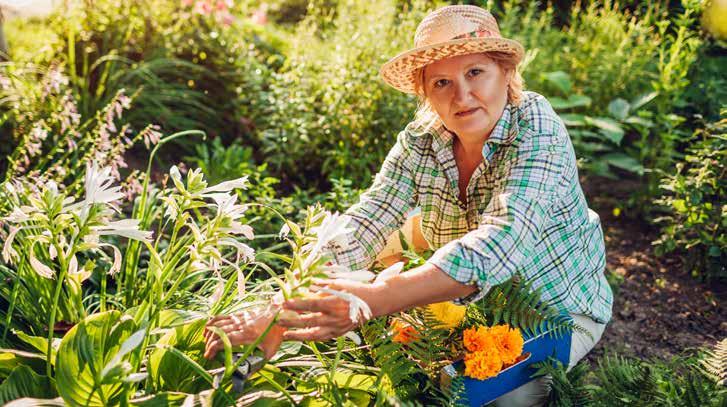
Our bodies are designed to help regulate our internal temperatures; however, certain factors can interfere with our body’s ability to self-regulate. When we get too hot, we start to perspire, which helps us cool off when the sweat evaporates. When the sweat is not able to evaporate, due to high humidity, our bodies lose the ability to regulate and heat gets trapped inside our bodies. This is when we become at risk for heat-related illnesses, such as heat exhaustion or heat stroke. To prevent heat-related illnesses, take precautions such as checking the heat index before gardening, and gardening in the morning or evening instead of daytime. Protect your skin from the sun by wearing light-weight and light-colored clothing, and a wide-brimmed hat to protect your skin from harmful UVA and UVB rays. Wear sunscreen and reapply regularly. Drink at least 8 to 12 ounces of water, juice, or electrolyte drink before going outside to garden, and drink at least that
much every hour you are outside, even if you do not feel thirsty. Take frequent breaks in the shade – at least every 15 to 20 minutes.
It is important to understand the symptoms of heat exhaustion or heat stroke so you can take immediate measures. Heat exhaustion is characterized by feeling faint or dizzy; sweating excessively; having cool, pale, or clammy skin; nausea or vomiting; and/or a rapid, weak pulse. If you start to experience any of these symptoms, immediately go to a cool, shady location and drink cool fluid. Remove some of your clothing and cool your body by wetting your skin with cool towels.
If you do not improve, seek medical attention. Symptoms of heat stroke include confusion; headache; red, hot, dry skin; nausea or vomiting; body temperature above 103 degrees; rapid pulse; and/or loss of consciousness. Heat stroke is a medical emergency, and 911 should be called immediately.
WWW.INTHEFIELDMAGAZINE.COM INTHEFIELD MAGAZINE August 2023 24 PAGE
FARMS Program Offers Ag Industry Incentives to Save Water
The Southwest Florida Water Management District’s (District) Facilitating Agricultural Resource Management Systems, or FARMS program is celebrating 20 years of serving the region’s agricultural industry. The District believes working with the agricultural community to conserve water is essential to help ensure future water supplies. FARMS manager Carole Estes explains more about this innovative cost-share program:

Facilitating Agricultural Resource Management Systems (FARMS) – Your Questions Answered
Q: What is FARMS?
A: The Facilitating Agricultural Resource Management Systems, or FARMS program for short, is designed to serve as an incentive to the agricultural community to promote water quantity, water quality and natural systems BMPs to conserve groundwater use and promote resource sustainability. The program is an agricultural cost-share reimbursement program that reduces groundwater withdrawals from the Upper Floridan aquifer through conservation and alternative water supply best management practices (BMPs). Water quality and natural systems improvement BMPs also may be cost-shared in priority areas in conjunction with water conservation BMPs. The program is a public/private partnership developed by the District and the Florida Department of Agriculture and Consumer Services (FDACS) in 2003.
Q: What is a best management practice, or BMP, and what does that look like for FARMS?
A: Best management practices (BMPs) are methods that have been determined to be the most effective and practical means for improving water conservation and quality in agricultural discharges. Examples of commonly used BMPs for FARMS include surface water pump stations, water control structures, automatic irrigation controls, soil moisture sensors and weather stations.
Q: What are some of the benefits to the water resources through the FARMS program?
A: Implementing agricultural BMPs provide many water resource benefits, including reduction of groundwater withdrawals from the Upper Floridian aquifer, improvement of ground and/or surface water quality impacted by groundwater withdrawals; applied nutrient reduction or retention, and improved natural system functions within wetlands and watersheds. Approved projects support the District’s Regional Water Supply Plan, Southern Water Use Caution Area, or SWUCA Recovery Strategy, Strategic Plan and Springs Management Plans.
Q: How much water has been offset through the FARMS program?
A: From the inception of the FARMS program in 2003 through 2023, the total projected groundwater offset from the more than 240 approved FARMS projects is 31.5 million gallons of water per day at an overall average cost-benefit of $2.43 per thousand gallons of water offset.

Q: As a member of the agricultural community, how do you qualify for FARMS funding?
A: If you are a member of the agricultural community, and have a District water use permit, you can apply for FARMS funding. To qualify for funding, projects must be located in the District and include one or more of the following BMP strategies: utilize an alternative water supply or technology to reduce groundwater use, improve irrigation water quality and watershed ecology by reducing reliance on poorer quality groundwater, and reduce nutrient applications or increase nutrient retention. The FARMS program may reimburse a grower up to 50% of the total project costs. Some projects may qualify for up to 75% reimbursement of total project costs based on the water resource benefits and the project location.
Q: How can I learn more about the FARMS program?
A: To learn more about the FARMS program, you can visit the District’s website at WaterMatters.org/FARMS or contact the District at (941) 404-1452.
WWW.INTHEFIELDMAGAZINE.COM INTHEFIELD MAGAZINE August 2023 25 PAGE

WWW.INTHEFIELDMAGAZINE.COM INTHEFIELD MAGAZINE August 2023 26 PAGE

WWW.INTHEFIELDMAGAZINE.COM INTHEFIELD MAGAZINE August 2023 27 PAGE
RAINWATER HARVESTING: NOW IS THE TIME
 Lynn Barber, Florida-Friendly LandscapingTM agent, UF/IFAS Extension Hillsborough County
Lynn Barber, Florida-Friendly LandscapingTM agent, UF/IFAS Extension Hillsborough County
If you haven’t attended a rainwater harvesting workshop with our office, UF/IFAS Extension Hillsborough County, you may well want to sign-up to participate. We are well into the rainy season and can most certainly capture this free resource.
Extension offers rainwater harvesting workshops, where participants learn about the benefits of collecting rainwater, the components of a rainwater collection system, amount of water you can collect, rain barrel construction, mosquitoes and rainwater collection, do’s and don’ts, connecting multiple barrels, and installation of overflow accommodations. Instructions regarding safety considerations, maintenance and painting barrels are also provided.
Rain barrels are devices that collect rainwater used mainly for landscape irrigation. These devices reduce stormwater runoff and erosion as they catch and contain rain. This process decreases the amount of potable water used for landscape irrigation because you use the water you capture to irrigate landscape plants, not edibles.
Rainwater harvesting is important because one inch of rain on a 1,000 square foot roof yields 623 gallons of water. Florida’s annual precipitation average is 53.7 inches. If we had the rainwater holding capacity, each of us could harvest more than 34,000 gallons each year. That’s why we teach residents how to make their own rain barrel because one is definitely not enough. Most wish they had more barrels. Past workshop attendees have said that since participating in this training, they have purchased additional rain barrels from feed stores or on-line. They love the conservation aspects of rainwater harvesting and are glad to do their part in decreasing stormwater runoff and erosion.
Hillsborough County residents can attend a rainwater harvesting workshop with our office, in person or via Zoom, and learn this easy and inexpensive water conservation method. If you live in a deed restricted community, follow your homeowner association architectural control or landscape committee procedures before you incorporate changes in your landscapes, including the installation of a rainwater harvesting system.
WWW.INTHEFIELDMAGAZINE.COM INTHEFIELD MAGAZINE August 2023 28 PAGE
We provide one rain barrel per household which has been drilled and spigoted. Some rules apply. From February through November, we offer Compost, Microirrigation and Rainwater Harvesting workshops the first Saturday of the month. To register for these and other workshops with our office, please go to: https:// www.eventbrite.com/o/ ufifas-hillsborough-extension-8606873308. As always, remember to reduce, reuse, recycle and repeat. Each of us can make an environmental difference.
Contact Lynn Barber at labarber@ufl.edu
Welcome Back
As summer vacation draws to a close, Mosaic welcomes students, faculty and staff back for another successful school year. We also salute the parents, community members and other businesses supporting education across the region.

Every Fall, Mosaic employees look forward to partnering with schools on academic and extracurricular initiatives from 4H & FFA to furthering innovative STEM learning.
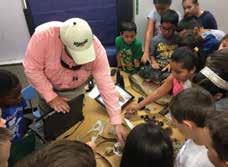
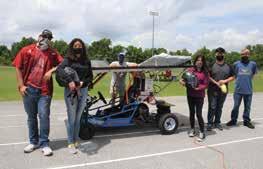


Let’s work together to cultivate the most valuable crop of alla bright future.
We help the world grow the food it needs.

www.mosaicfloridaphosphate.com



WWW.INTHEFIELDMAGAZINE.COM INTHEFIELD MAGAZINE August 2023 29 PAGE
NEWS BRIEFS
Compiled by Jim Frankowiak
UF/IFAS Issues RFP for AI Center

The University of Florida Institute for Food and Agricultural Sciences (UF/IFAS) has issued a request for proposals (RFP) for the new Center for Applied Artificial Intelligence (AI) at its Gulf Coast Research and Education Center at Balm in southern Hillsborough County. The estimated $20 million, 34,000-square-foot project will include offices, research and meeting spaces and provide housing for graduate students.

“The facility and associated faculty will develop programs in robotics, precision agriculture and plant breeding that will accelerate agricultural technologies for not only our strawberry and tomato industries in the region but the breadth of agricultural enterprises around the state,” said Robert Gilbert, UF/ IFAS’ dean for research.
Farm Bureau’s Voyager Travel Club Offers Member Vacation Savings
Florida Farm Bureau members have an opportunity for vacation savings on hotels, resorts, car rentals and more through membership in the Voyager Travel Club. Members may enjoy even greater savings as premium members. For more information, visit MyFFBF.org to obtain the Farm Bureau exclusive signup code.
USDA Offers $21 Million in Technical Assistance Grants for Renewable Energy and Energy Efficiency
The U.S. Department of Energy’s Rural Business Cooperative Service has $21 million available for the Rural Energy America Program to help agricultural producers and rural small businesses access federal funds for renewable energy and energy efficiency improvements. Eligible recipients for these grants include state, tribal or local governments; colleges and universities; electric cooperatives and utility companies; and for-profit and non-profit organizations. For more information, visit: www.rd.usda.gov.
USDA Streamlines Agricultural Conservation Easement Program
The U.S. Department of Agriculture (USDA) is streamlining its Agricultural Conservation Easement Program (ACEP) to ultimately better help agricultural producers and private landowners conserve wetlands, productive farmlands and at-risk grasslands. The USDA’s Natural Resources Conservation Service (NRCS), which administers the ACEP, is updating its processes around appraisals, land surveys, as well as certifying eligible entities that help NRCS and producers enroll into easements. For more information, contact the USDA Service Center in Plant City, 201 South Collins Street, Suite 201. Telephone: 813/752-1474.
Dr. Mathews Paret to Lead UF Plant Pathology
Mathews Paret, Ph.D., a professor in the University of Florida (UF) Plant Pathology Department has been named department chair, effective September 15. In this capacity, Dr. Paret will lead the department of more than 30 members on the UF Gainesville campus and at research and education centers around Florida. Plant pathologists work on the front lines of emerging and economically important diseases that impact crop production and farmers’ livelihoods.
District Approves Reduced Millage Rate
The Southwest Water Management District’s (District) Governing Board has voted to decrease property taxes by adopting a proposed 9.6% reduced millage rate for the District’s fiscal year 2024 budget. The reduction, which will be subject to final approval on September 6, will be effective October 23 and will save taxpayers $13.9 million.
FDACS Reviewing 181 Florida Rural and Family Lands Protection Program Applications
The Florida Department of Agriculture and Consumer Services (FDACS) is reviewing 181 applications for the Rural and Family Lands Protection Program RFLPP). The applications represent over 200,000 acres. The program, which partners with farmers and ranchers through conservation easements, is designed to safeguard working agricultural operations that contribute to Florida’s economy and the production of food and fiber.
WWW.INTHEFIELDMAGAZINE.COM INTHEFIELD MAGAZINE August 2023 30 PAGE
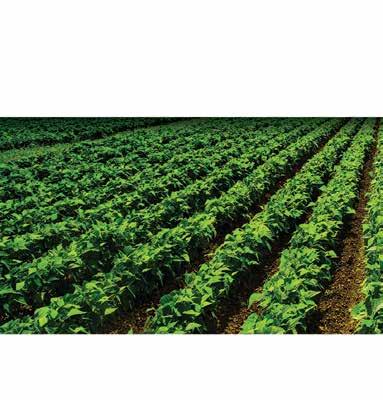
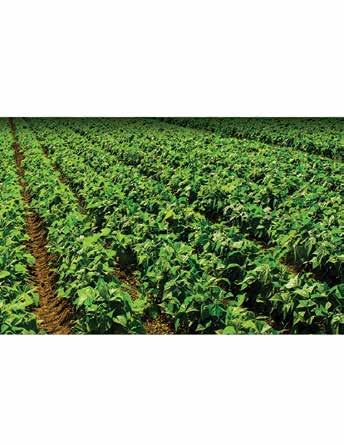























WWW.INTHEFIELDMAGAZINE.COM INTHEFIELD MAGAZINE August 2023 31 PAGE Is your farm FSMA ready? www.FDACS.gov/FSMA Sign up today for a free On-Farm Readiness Review This publication is supported by the Food and Drug Administration (FDA) of the U.S. Department of Health and Human Services (HHS) as part of a financial assistance award U2FFD007446 totaling $1,166,732 with 100 percent funded by FDA/HHS. The contents are those of the author(s) and do not necessarily represent the official views of, nor an endorsement, by FDA/HHS, or the U.S. Government.
HARVESTER CROO SET TO COMMERCIALIZE FULLY AUTOMATED STRAWBERRY HARVESTING. BENEFITS GROWERS, RETAILERS AND CONSUMERS
 By Jim Frankowiak
By Jim Frankowiak
Harvest CROO (Computerized Robotic Optimized Obtainer) successfully completed field testing of its artificial intelligence (AI) enabled robotics harvesting machine during the 2022 – 2023 Florida strawberry season and is now proceeding with the production of commercial machines for use during upcoming seasons.
Co-founded in 2012 by third-generation strawberry grower Gary Wishnatzki, head of Wish Farms, and Bob Pitzer, Chief Technical Officer (CTO) for Harvest CROO, the company was created to meet the chronic shortage of agricultural workers globally. “Labor represents the majority of costs for growers,” said Harvest CROO Executive Chairman and Chief Executive Officer (CEO) Dr. Joseph McGee. “Those costs continue to increase annually as the availability of workers keeps decreasing. That worker shortage means unpicked strawberries here in the U.S. are up to 25 percent each season.” McGee noted that this labor challenge is faced not only by strawberry growers but specialty crop producers around the world.
Since its founding, Harvest CROO has developed and field-tested seven prototype machines. Each prototype has been pivotal in the development of the technology to provide a complete human replacement. The advancement of AI, Camera, Lidar technology, machine learning, and vision learning were all required to enable the “Harvester” to get to commercial trials this season.

Each Harvester is 32 feet in length, 23 feet wide, and 19 feet high with 16 robots underneath that work independently scanning 16 plants. The robots then simultaneously pick the berries four rows at a time.
The robots pull away the plant leaves, view each plant and then determine which strawberries are ripe and ready to be picked. They then create a 3-dimensional targeting solution using a proprietary algorithm to pick the strawberries.
After the Harvester carefully separates the stem from the fruit, it transports it along in a fluid handling/cleansing solution before presenting the strawberry to a Machine Learning and Vision enabled secondary inspection system which inspects and classifies each strawberry for damage and disease before arriving at the automated packaging system.
In addition to these technological advances, the Harvesters have the capability of picking fruit during the night, helping growers avoid picking at the hottest times of day and reducing damage to the fruit.
“This season’s field tests met all of our criteria, and we are moving forward with production plans for the commercial harvesters for the upcoming seasons,” said McGee. “We are hopeful that machine production will not be hampered by the shortage of needed parts, an obstacle similar to that of computer chips needed by car manufacturers around the world.” Harvest CROO has pre-orders for the machines.
While initially formed to overcome the shortage of agricultural workers for harvesting crops, Harvest CROO’s solution has become much broader. “Our harvesters will pick, inspect, clean, cool, and pack berries for growers,” McGee said. In addition to operating the harvesters, Harvest CROO is planning an operation center for farm manage-
WWW.INTHEFIELDMAGAZINE.COM INTHEFIELD MAGAZINE August 2023 32 PAGE
ment, remote monitoring of fleet, data collection, analytics, and predictive insights from data accumulated by each of the 16 robots on the machine.
Customer relationships actually begin before each season as Harvest CROO sets up each farm, surveying the field and identifying any obstacles. Harvesting services include overall scheduling, punching holes in each bed where strawberry plants will be grown to precisely guide harvester navigation and picking.
“Initially we will also provide field, depot maintenance and logistics, as well as Food Safety compliance for the harvesting machines,” he added. “All of this will give multiple benefits to our grower customers that include traceability and weight control and that means no underweight rejection of their berries, reduced recall – all leading to increased revenue and profit.” The approach also suggests there may also be an increase in the shelf-life of the berries, as diseased and damaged fruit are inspected and removed using the machine learning algorithm incorporated in the secondary inspection system.
McGee also noted that approximately 70 percent of the U.S. strawberry industry is invested in the company. “Our plan is to scale our production to match the needs of growers here in Florida and in California, moving our equipment between the two areas,” he said. “Options are being explored to comply with the grower’s desire to contract the service and not own and operate the Harvesters, offering to match grower cost for labor with the added benefits our machines provide.
“Retailers also benefit from Harvest CROO-picked berries,” said McGee. “Overall fruit quality is enhanced; the grading system for fruit is more precise enabling differential pricing, shelf-life is extended and there is an overall reduction of waste.”
The Harvest CROO machine is modular “and the technology developed can be used to enable us to harvest other crops as we grow. This provides us with a potential global market for our harvesting machines and services,” said McGee.
For more information about Harvest CROO, visit harvestcroorobotics.com.



WWW.INTHEFIELDMAGAZINE.COM INTHEFIELD MAGAZINE August 2023 33 PAGE
In Hillsborough County, your choice for quality care is simple.
You have a leader in clinical excellence right in your backyard.
At South Florida Baptist Hospital, you get compassionate, highquality care from an experienced team. You’re our primary focus, so we combine outstanding health care with state-of-the-art technologies to bring you exceptional clinical outcomes. You can get specialized treatment in a number of areas including heart care, cancer care, obstetrics, orthopedics and much more. We’re committed to being your partner for continued health and wellness, and giving you the extraordinary care you deserve. Make the easy health care choice–South Florida Baptist Hospital, located at 301 North Alexander Street in Plant City.

To learn more, go to BayCareInHillsborough.org or scan this code.


23-2917026-0723
FLORIDA JAMAICAN CHERRIES
By Sandy Sun, M.S. Clinical Medicines, B.S. Nutrition Science
Have you heard of a cotton candy tree? While not really cotton candy as we know it, the fruit is described as very sweet, much like cotton candy. This tree grows in Florida and is also called Jamaican cherry tree, strawberry tree, muntingia calabura, Panama berry, Singapore cherry, cotton candy berry, jamfruit, or bird cherry. Although sometimes called a cherry or berry, this fruit is not truly either. Indigenous to Mexico, Central and South America, the tree grows rapidly and can withstand both acidic and alkaline soil. In Florida, Jamaican cherry trees can bear fruit all year, but typically is more productive during the warmer months.
Jamaican cherries are very sweet and are delicious eaten out-of-hand. They can also be cooked into jam or desserts or made into beverages. The leaves of the tree can also be steeped in hot water to make tea. The fruit ranges from pale pink to a red color when ripe and looks like a round berry that can be picked straight off the tree. The fruit contains many seeds, although they are very small and may not be noticeable. Fruits are green when young, changing to yellow before ripening to bright red with thin skin. The taste is very sweet and juicy, lending it the name “cotton candy tree.”
Nutritional Profile
Fresh Jamaican cherries are high in vitamins A, C, and K, as well as calcium, iron, phosphorus and potassium. The outer skin is tender and edible and contains most of the fiber in the fruit.
Antioxidants
Fresh Jamaican cherries are high in antioxidants, carotenoids and vitamin C. The highest concentration of these nutrients is found in the skin and seeds. Antioxidants help protect the body’s cell membranes from harmful free radical damage and lower markers of oxidative stress.
These compounds help provide anti-inflammatory effects, which are beneficial in warding off many major diseases.
These antioxidants are particularly beneficial in protecting blood vessels from oxidative stress, which results in atherosclerosis and high blood pressure. Several of the carotenoids are especially important for good eye health, offering protection to the retina and macula.
Vitamin K
Jamaican cherries are high in vitamin K which is an essential component for clotting of blood in the body. This vitamin also helps maintain bone health by transporting calcium and metabolizes the mineral into your skeleton. Several research studies have found that vitamin K boosts bone mineral density and reduces fracture rates in people with osteoporosis. As a result, the Institute of Medicine increased its daily recommendation of vitamin K.
How to select and store
Choose plump, firm fruit that feel heavy for their size and are still attached to the stem. Look for richly colored skin that is free of blemishes. Store fruit in a shallow container in the refrigerator for up to one to two days. Jamaican cherries are delicate and best eaten as soon as picked. Rinse under cool running water before eating or preparing.
How to enjoy
Jamaican cherries are delicious eaten raw, with its sweet crunchiness. The fruits can be mixed into fruit salad or desserts, or they can be cooked into jams, preserves, and sauces. The leaves are also edible and can be steeped in water to make tea.

Enjoy fresh Jamaican cherries today. In every juicy, crunchy bite is a load of great nutrition.
Selected References
http://edis.ifas.ufl.edu/ http://www.fruitsandveggiesmorematters.org
WWW.INTHEFIELDMAGAZINE.COM INTHEFIELD MAGAZINE August 2023 35 PAGE
COMMISSIONER WILTON SIMPSON ANNOUNCES NEARLY $3 MILLION AVAILABLE TO LANDOWNERS FOR FLORIDA’S FUTURE FORESTS PROGRAM

Florida Commissioner of Agriculture Wilton Simpson and the Florida Forest Service announced $2.8 million is now available to landowners through Florida’s Future Forests Program. In its third year, the program offers landowners costshare payments to help increase the acreage of Florida’s healthy forests, which provide clean air, clean water, wildlife habitat, recreation, and thousands of essential products.
“A majority of our state’s forests are privately owned, so Florida landowners are key to maintaining and conserving our forests and natural resources for future generations,” said Commissioner Simpson. “This important program helps landowners offset the initial cost of site preparation, seedlings, and the planting of seedlings.”
“Forests are valuable natural resources and a great longterm investment for the state,” said Florida Forest Service Director Rick Dolan. “Trees remove carbon dioxide emissions as well as produce oxygen, contribute to clean water, and provide homes for wildlife.”
The Florida’s Future Forests Program is open to non-industrial, private landowners, local governments, and registered nonprofit organizations. To obtain an application and learn more about Florida’s Future Forests Program, visit FDACS. gov/FutureForests.
Applicants may request funding for tree establishment practices on a minimum of 20 acres and up to a maximum of 250 acres. Since 2021, the Florida Legislature has appropriated
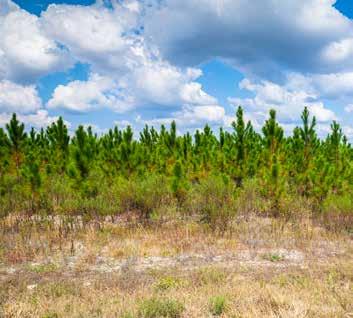
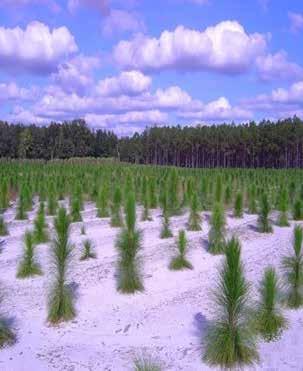
approximately $12 million for this program. These funds have already been used to create 26,000 acres of healthy forests in Florida.
The Florida Forest Service, a division of the Florida Department of Agriculture and Consumer Services, manages more than 1 million acres of state forests and provides forest management assistance on more than 17 million acres of private and community forests. The Florida Forest Service is also responsible for protecting homes, forestland, and natural resources from the devastating effects of wildfire on more than 26 million acres.
For more information about Commissioner Simpson and the Florida Department of Agriculture and Consumer Services, visit FDACS.gov.
WWW.INTHEFIELDMAGAZINE.COM INTHEFIELD MAGAZINE August 2023 36 PAGE
FLORIDA FARM TEAM CARD FOR AGRICULTURE SALES TAX EXEMPTION NOW LAW
By Jim Frankowiak
(c) For items purchased tax exempt pursuant to this subsection, proof of acceptance by a selling dealer of a Florida farm TEAM card from a purchaser relieves the selling dealer of the responsibility of collecting the tax on the sale of such items, and the department shall look solely to the purchaser for recovery of the tax if it determines that the purchaser was not entitled to the exemption.
What will this card cover?
1. The primary purpose of the TEAM card will be to allow farmers to claim applicable sales tax exemptions in lieu of certificates or affidavits. Many of these exemptions are not new, the card just makes transactions with retailers much smoother than keeping copies of documents in your glove box to educate people about the tax exempt status for each specific kind of product.
On July 1, 2023, Senate Bill 1164 / House Bill 1279 became law as Florida Chapter 2023-154. This bill covered a range of items that the Florida Department of Agriculture and Consumer Services (FDACS) will regulate. One key part of this bill was the creation of the “Farm Tax Exempt Agricultural Materials (TEAM) Card for use by farmers to claim applicable sales tax exemptions in lieu of certificates or affidavits.”
Florida Farm Bureau explained, “This card is meant to provide a more streamlined process for producers to receive the agricultural sales tax exemptions they are given in our state.” Many producers in North Florida are familiar with Georgia’s “Gate Cards” which allow farmers to carry a card to provide retail establishments proof of agricultural sales tax exemption in Georgia. This year the Florida legislature created a similar system for Florida farmers and ranchers. The law states that FDACS shall accept Florida Farm TEAM Card applications beginning on January 1, 2024.
Another key component in Florida Chapter 2023-154 was the clarification of sales tax exemption for fencing and handling facilities. Traditional fence supplies were included in the bill passed in 2022, but electric and temporary fences, as well as materials for handling facilities, were left out of the previous law. The sales tax exemption law now covers materials used to construct or repair permanent or temporary fencing used to contain, confine, or process livestock. A more specific list is provided below.
Florida Chapter 2023-154 states: FLORIDA FARM TEAM CARD
(a) Notwithstanding any other law, a farmer whose property has been classified as agricultural pursuant to s. 193.461 or who has implemented agricultural best management practices adopted by the Department of Agriculture and Consumer Services pursuant to s. 403.067(7)(c)2. may apply to the department for a Florida farm tax exempt agricultural materials (TEAM) card to claim the applicable sales tax exemptions provided in this section. A farmer may present the Florida Farm TEAM card to a selling dealer in lieu of a certificate or affidavit otherwise required by this chapter…
2. Fencing and processing facility supplies will be covered by the new Farm TEAM card. As of July 1, 2023, specific products now included in agricultural tax exemption include:
• Fencing, lumber, posts, fence wire, and panels.
• Electric fencing supplies were also included in the updated law: Energizers and fence chargers, electric fence wire, tape or rope, ground rods, connector clamps, and insulators.
• Even premixed concrete for posts, nails, screws staples, and hinges for gates.
3. Older tax exemptions will also be covered by the new Farm TEAM card. The following are examples of Florida agricultural sales tax exemptions approved by the legislature in previous years:
• Animal and Aquaculture Health Products
• Off-road (dyed) diesel fuel
• Electricity Used for Agricultural Purposes
• Trailers Used in Agricultural Production
• Fertilizers, Insecticides, Fungicides, Pesticides and Herbicides used for Commercial Production
• Power Farm Equipment – Accessory Parts, Accessories, Repairs & Equipment Used Through the Storage Phase of Production

• Seedlings, Cuttings and Plants Used to Produce Food for Human Consumption
All of these sales tax exemptions listed above are currently available to farmers and ranchers. The TEAM cards, that will be issued starting in 2024, will make the transactions at supply dealers much simpler. Until the TEAM cards are issued, farmers and ranchers will still have to provide the specific product Exemption Certificates and Tax Information Publications (TIP) to retailers for their records.
WWW.INTHEFIELDMAGAZINE.COM INTHEFIELD MAGAZINE August 2023 37 PAGE
All cattle fencing and cowpen supplies are now sales tax exempt after Senate Bill 1164 / House Bill 1279 became law on July 1, 2023.
WHEN THE RAIN ARRIVES, CONSIDER THESE OPTIONS!
Lynn Barber, Florida-Friendly LandscapingTM agent, UF/IFAS Extension Hillsborough County
Many of us, hopefully most, care if we save potablei.e., drinking water in the landscape. About 1,000 people move to Florida daily. This will create an increase in the overall water demand, and water is a non-renewable resource. To make sure there is enough to go around, each of us needs to consider ways we can save potable water in our landscapes.
Here are some examples of Florida-Friendly LandscapingTM principles and related practices that conserve water. Two of the dozen ways below that can save water, money and cost you absolutely nothing, include shutting it off and a free irrigation evaluation.
SHUT IT OFF – “it” being your irrigation controller. Yes, there is an “off” setting which is a good option, especially now, during the rainy season. Do you walk or drive down your street, rain falling, and see your or your neighbors’ irrigation systems in operation and wonder why? We also wonder why. Please see the sections below: functioning rain shut-off device and free irrigation evaluation. Both paragraphs may be eye-opening.
Florida Statute 373.62 (2009) requires a functioning rain shutoff device where in-ground irrigation has been installed. The life expectancy of some of these devices is one to three years. Is yours working? If your irrigation system is running when it’s raining, chances are it is not.
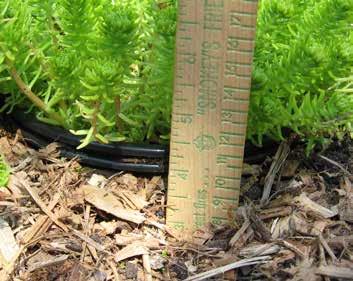

If you are in Hillsborough County, call Heather Crowley, UF/IFAS Extension Hillsborough County, 813-744-5519. She can provide more information on how to determine if your rain shutoff device is working correctly or if you
need to look at alternatives. Heather can also provide a free irrigation evaluation on-site or over the phone. Please refer to the University of Florida publication, Residential Irrigation System Rainfall Shutoff Devices, or Rain Sensors, by Michael D. Dukes and Dorota Z. Haman, at: http://edis.ifas.ufl.edu/ae221.
PURCHASE DROUGHT-TOLERANT PLANTS, which require significantly less-to-no water after establishment.

WWW.INTHEFIELDMAGAZINE.COM INTHEFIELD MAGAZINE August 2023 38 PAGE
All plants need water to become established, meaning root and shoot growth. How do you know if your plants are drought-tolerant? Order a free copy of The FloridaFriendly LandscapingTM Guide to Plant Selection and Landscape Design Selection from http:watermatters. org. Look under Florida-Friendly LandscapingTM, then free publications. This guide provides information on plant materials for central Florida - our area - and the key is useful to identify plants with high, medium, low or no drought tolerance.
HYDROZONE YOUR PLANTS. This means grouping your plants according to their watering needs. Again, the Plant Selection Guide will be beneficial because it shows the soil moisture needed by the plants in the Guide, from well-drained to wet and four categories in between. An example of why we should hydrozone our plants would be planting an herb garden and cactus together. If you water the herbs to meet their needs, the cactus will be overwatered and die.
PLANT GROUNDCOVERS INSTEAD OF TURFGRASS

where turf is not purposeful. Turfgrass purposes can include play areas for children, a pet area for dogs, putting green, etc. Groundcovers generally require less water, fertilizer, and pesticides than turf. The Guide referred to above provides information on several groundcovers that will work in our area. Just note the site conditions (sun, shade, soil texture, soil pH, soil moisture) in your landscape and select accordingly. If you live in a deedrestricted community, check your deed restrictions, and meet with your landscape review or architectural control committees as required before making changes.
MULCH landscape beds (2-3 inches deep after settling). Mulch is beneficial because it retains moisture in the soil, moderates soil temperature, reduces runoff and erosion, improves soil structure, suppresses weeds, enhances the beauty of the landscape, provides increased area for root growth and protects plants from lawnmowers and weed eaters. Organic mulches recommended include Eucalyptus, Melaleuca (Punk tree), Pine bark, Pine straw and Oak leaves.
MICROIRRIGATION is great for landscape beds. Compared to traditional inground irrigation systems, microirrigation provides gallons of water per hour instead of gallons per minute. This irrigation method not only conserves water, but is also less restricted by water restrictions. If you have not attended a microirrigation workshop for Hillsborough County residents, you may want to register for one at: http://hillsborough.ifas.ufl.edu/ calendar.shtml. This same link works for other classes we offer. We provide one microirrigation kit per household, one time only for a nominal fee.
APPLY ½ - ¾ INCH OF WATER (irrigation or rainfall) which is all plants need per watering event. How do you

know how much water you received from rainfall? Use a rain gauge to determine whether this amount has been reached and empty the rain gauge after viewing it. You can also do a ‘catch can test’ to determine the amount of water your inground irrigation system is providing by individual zone. For more information on the ‘catch can test,’ please see the University of Florida publication, Irrigation System Maintenance, and read the section on calibration at: http://www.gardeningsolutions.ifas.ufl. edu/water/articles/systems/maintenance.shtml.
Harvest rainwater for ornamental plants, not edibles, if captured from your roof. If you have not attended a rainwater harvesting workshop for Hillsborough County residents, you may want to register for one. We provide one drilled and spigoted rain barrel per household, one time only for a nominal fee.
Consider creating a rain garden in a low area of your landscape. This will decrease some of the stormwater runoff from your yard. Rain gardens are a beautiful landscape addition. Plant selections should include those that like wet feet and are drought-tolerant for times we don’t receive much rain. Consider using Swamp Hibiscus, Swamp Sunflower, Wiregrass and Muhly Grass. Before you purchase plants for your rain garden, determine the existing site conditions. Rain gardens installed in sandy soils only hold water for a few hours.
If you are a high-water user, 15,000 gallons per month or more, you can contact our office, see above contact information, to determine if you qualify for a free irrigation evaluation. Check your water bill which shows the number of gallons of water you are using.
Bottom line: all of us have a stake in and impact the future. Conserving water in our landscapes involves easy options as shown above. For assistance with horticultural questions, call: 813-744-5519. More gardening and workshop information is available at: http://hillsborough.ifas.ufl.edu. Remember to reuse, reduce, recycle and repeat.
WWW.INTHEFIELDMAGAZINE.COM INTHEFIELD MAGAZINE August 2023 39 PAGE
SPENCER BAYLOR
New Area V Florida FFA Vice President
 By Jim Frankowiak
By Jim Frankowiak
Spencer Baylor of Plant City is the recently elected Area V Vice President for Florida FFA. Area V encompasses FFA chapters in Charlotte, De Soto, Hillsborough, Lee, Manatee, Pasco, Pinellas and Sarasota counties.

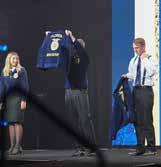
Serving as a state officer for the next year offers Baylor many opportunities to influence, impact, and serve FFA members, advisors, teachers, and supporters of the organization. Overall, FFA strives to make a positive difference in the lives of students by developing their potential for premier leadership, personal growth, and career success through agricultural education. This is exemplified by Baylor and his fellow state officers.
Baylor was born and raised in Lithia. He and his family moved to Plant City some seven years ago. He is the son of Pamela and Bryan Baylor and brother of Owen, 20. His mother is retired, while his father is Vice President of Operations for phosphate fertilizer producer Ostara.
“I have a deep passion for agriculture and the FFA which began at Bevis Elementary School with two ducks,” said Baylor. “I grew up in a planned community, so agriculture was far off of my radar. Those two ducks taught me so much about animal life and myself. I learned responsibility, time management, reproduction, care, and health, as well as having my very first show experience. Like many others, I was far too young to join FFA so I started on my agricultural path as a 4-H Cloverbud.
“Once I enrolled at Randall Middle School and could officially join FFA, I was so very proud to zip up my very first blue and gold jacket,” he said. “This was the beginning of me plotting my path to my future.
“Outreach is so important with FFA membership, so I wanted to be part of the leadership teams to help extend our organization and find the right fit for every member,” said Baylor. “I am a firm believer that this organization truly has a place for every single member. The diversity of academic experiences, career and leadership events, and community service is unmatched compared to other organizations. I started taking on leadership roles in middle school holding office every year, including serving as president in the eighth grade.
“It was in middle school where I first met some incredible mentors that helped me set my path with FFA,” he said. “Thus, I had a goal of achieving Florida FFA State Office following my high school graduation. I continued leading my freshman team as President and then finishing my senior year as President of Strawberry Crest, President of the Hillsborough County Federation, and Secretary of District 9.” Baylor was a member of the Strawberry Crest National Honor Society and National Technical Honor Society, graduating with a 6.2242 GPA.
Amassing more than 150 hours of community service, he was involved with a number of organizations across his community.
WWW.INTHEFIELDMAGAZINE.COM INTHEFIELD MAGAZINE August 2023 40 PAGE
Baylor has also served on the Junior Florida Cattlemen’s Association boards of directors at the county and state levels for the past year. He earned several FFA Degrees, including State, Chapter, Greenhand, and Discovery levels. Additionally, Baylor has become certified in Elanco Animal Science, Ag Communications, Animal Science Specialist, Ag Technology Specialist, Ag Associate, and Ag Systems over his FFA career.
FFA offers its members a broad range of Career and Leadership Development activities and Baylor has taken advantage of many, including Ag Mechanics, Tractor Driving, National Medal Meats Evaluation, HS Meats Evaluation, Livestock Judging, Meats Evaluation, Creed Speaking, Forestry, Tools Identification and State Champion MS Meats Evaluation and MS Meats Evaluation High Individual. Baylor also has a broad range of FFA experiences and awards, including the Strawberry Crest High School (SCHS) Leadership Award this year, SCHS Outstanding Senior Showman, Jim Jeffries Leadership Award, and a host of others.
Mentors have been very important to Baylor. In addition to his family, he appreciates the guidance provided by Chris Andrlik, Kelley Longanecker, and the SW Show Cattle Team.
“I ran for FFA State Office because of the impact that the state officers had on me in the early parts of my FFA career,” Baylor said. “I knew that when I grew up I wanted to have that same impact on others around me.”

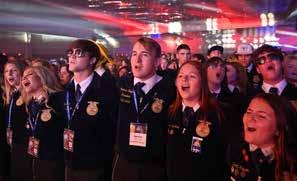

Following Baylor’s year as a Florida FFA State Officer, he plans to attend Texas Tech University, majoring in Animal Science. “I’m not exactly sure what career I want to pursue, however I know it will be in the animal science field,” he said.
Congratulations Spencer and best of luck as you continue to “Plot Your Path.”

WWW.INTHEFIELDMAGAZINE.COM INTHEFIELD MAGAZINE August 2023 41 PAGE
2023 PLANT CITY CHAMBER OF COMMERCE SALUTE TO AG AWARD RECIPIENTS

Sponsored by Farm Credit | Bios and photos submitted by the Plant City Chamber of Commerce
AGRICULTURIST OF THE YEAR
Kenneth Parker
Kenneth Parker is a lifelong resident of Hillsborough County, Florida. Born at South Florida Baptist Hospital in Plant City and raised at Welcome, he has been married to his high school sweetheart Dee for 35 years, and they have two children Jerrod and Calli Jo, and four grandchildren. His son Jerrod is married to Summer Norris Parker and works in real estate and development. Calli Jo is married to James Baker and is an elementary school teacher. Kenneth is a deacon at Welcome Baptist Church in Lithia. He also serves as a member of the Board of Directors of the Florida Strawberry Festival and serves as superintendent of the steer committee.
He served as President of the Hillsborough County Farm Bureau Board from 2011-2018. Kenneth also is currently serving on the Florida Farm Bureau State Trade Committee, Chairman of the UF/IFAS Gulf Coast Research and Education Center Advisory Council, UF/IFAS Advancement Council, Chairman of the Florida Ag Council Board, Specialty Crop Farm Bill Alliance Member, National Berry Crops Initiative Board, South West Florida Water Management District Ag Committee, Hillsborough County Environmental Protection Commission Stakeholder Committee, Ag Extension Advisory Committee, member of the Hillsborough County Agricultural Economic Development Council, Florida Cattleman’s Association member, member of USDA's Agricultural Technical Advisory Committee for Fruits & Vegetables, and serves on the Advisory Council of the Wedgworth Leadership Institute.
Kenneth believes that the future of agriculture is strong in Hillsborough County where he has assisted strawberry growers to maximize marketable yields by making sound recommendations based on current research that is cost-effective and strives to promote good stewardship of the natural resources. He is currently the Executive Director of the Florida Strawberry Growers Association where he advocates for the growers at the local, state, and federal levels. Kenneth also enjoys ranching. He was a founding partner at the South Prong Ranch, a commercial cow/calf and hay operation, near the Welcome community in Lithia. Kenneth is committed to agricultural education and enjoys helping FFA and 4-H members with their livestock and crop projects. He knows these young people are the leaders of the future and they represent what is right with America.
As a graduate of Florida Southern College, Kenneth is convinced their projects help build excellent character, sound work ethic, and personal responsibility, and prepares them for higher education or technical training that will offer opportunities to be productive and fulfilled individuals.
AGRI-BUSINESS OF THE YEAR
J & R Nursery, LLC
J & R Nursery, LLC located in Dover FL. is a Wholesale grower of containerized wood ornamental plants for the Professional Landscape Industry. Since its start in 1994, they have primarily focused on providing material to customers scattered throughout the southeastern United States. They currently have two production facilities located in the Dover Area. Projects and customers they have provided materials to over the years include retail garden centers, theme parks, golf courses, multifamily complexes, sporting venues (including the 1996 Summer Olympics), commercial warehousing, re-wholesalers, residential housing, botanical gardens, highway construction, and reclamation areas. They are very proud and blessed as a company to have had a part in helping these projects be completed successfully. J & R has won numerous awards including an award in the Cool Products portion at The Landscape Show hosted in Orlando.
Greg and J&R Nursery are also long-time sponsors and supporters of the Youth Plant Show and Sale at the Florida Strawberry Festival.
WWW.INTHEFIELDMAGAZINE.COM INTHEFIELD MAGAZINE August 2023 42 PAGE
SUPPORTER OF YOUTH IN AGRICULTURE
Shaun Bryant
Shaun Bryant is a fourth-generation Plant City native. His family roots are that of educators and farmers. Shaun attended Plant City High School where he wrestled and graduated in 2000. He began working as a plumbing apprentice for Freddie Mullis Plumbing in town before getting his plumbing license in 2007 and starting his own business, Pipe Pros.
Shaun is married to his wife of 17 years, Crystal, and they have three children together, Brody, Ava, and Kellan. He is an active member of the Plant City Noon Rotary and was recently installed on the board as the Secretary. Shaun has always poured back into the community, whether it is cooking hot dogs during the Christmas parade, running around cutting down trees after hurricanes or purchasing livestock for local FFA and 4-H students. Shaun has been a tremendous supporter of our ag youth here in the Plant City area by purchasing plants, swine, turkeys, and steers to name a few at the Florida Strawberry Festival, Hillsborough County Fair, and the Hillsborough Beef Expo.
AGRICULTURE EDUCATOR OF THE YEAR AWARD
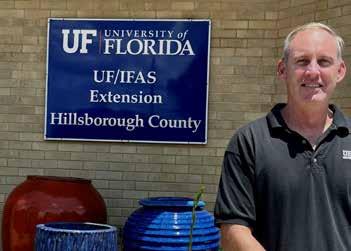
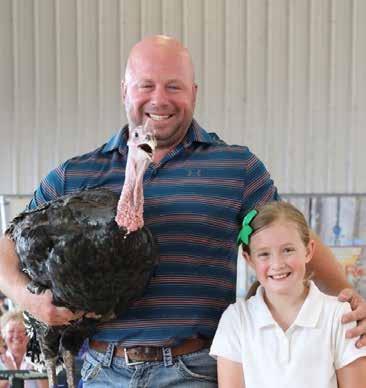
Shawn Steed
Shawn was born in Brooklyn, NY, and was raised in Broward County, Fl. When he was in high school his family moved to Gainesville, embracing a rural lifestyle on five acres. After attending Santa Fe Community College and transferring to the College of Agriculture at UF, he graduated magna cum laude with a Bachelor of Science in Horticulture. He went on to earn a Master of Science degree in vegetable crop production/weed science in 1998.
Following graduation, Shawn embarked on a professional career that showcased his expertise in the field. He initially worked for Speedling Inc., a renowned transplant producer, and later served as a propagation manager at Cherry Lake Tree Farm. Seeking new challenges and opportunities, he established his own small farm, ArborStarts, Inc., in Plant City. Over the past 23 years, ArborStarts, Inc. has grown a variety of vegetables and fruits for a CSA, produced ornamental tree starts, and grass-fed beef quarters. While farming Shawn was a consultant for Pinecrest Farms and Holmberg Farms. He later became a propagation manager at Holmberg Farms.
It was during this time that Shawn received a recommendation from the former ornamental production extension agent to consider applying for her position, as she was relocating to Texas. Taking this advice to heart, Shawn decided to pursue the opportunity and successfully secured the position in 2009.
In his role as the Environmental Horticulture Production Extension Agent, Shawn has made a profound impact on numerous producers, businesses, and individuals by providing education on research-based, resource-efficient environmental horticulture production practices. Through these comprehensive programs, Shawn has contributed to the local economy by addressing production challenges, introducing innovative production methods, fostering workforce development, and enhancing job skills. It is estimated that these initiatives have resulted in a remarkable $13.6 million economic return to the community.
continued on Pg 48
WWW.INTHEFIELDMAGAZINE.COM INTHEFIELD MAGAZINE August 2023 43 PAGE
Tales Of Turtle Tails
by John Dicks
When you grow up in Florida, chances are you spent lots of your summer enjoying the beach. For me, it was the joy of squeaky, sugar-white sand of Anna Maria that most captured my imagination.
Most of such beach time was limited to just day trips with my family. Only occasionally did we find a room somewhere for a night or two. Vivid memories I have of being 10 or 12 years old and learning to skimboard at water’s edge.
One thing, though, that escapes me about the beach is remembering any interaction with sea turtles. Surely they were there, just like now, thousands of mama Loggerheads lumbering ashore at night to nest, leaving a deposit of 100 eggs or more in a flipper-dug and sand-covered clutch. After incubating a couple of months, new hatchlings would emerge and scramble to the Gulf.
How did I miss all of that?
Today it seems that everyone is attuned to the tales of turtles. Hardly can you tune into the tv without an update during the season. It’s a good one this year, with about 400 nests on Anna Maria Island, and hopes to beat the record of 544.

Yet these Gulf Coast numbers pale by comparison to the activity on Florida’s east coast. There, over just 20 miles, it’s projected that some 30,000 nests will be laid!
The numbers are so massive that unlike our western beaches, where if you’re lucky, you might find one turtle on a given night, on the Atlantic side it’s almost impossible NOT to see one, or maybe many!
There’s an amazing invasion of turtles going on.
Naturally, curiosity led to my acute desire to check it out firsthand. So, teamed with three friends equally interested in seeing a parade of turtles, we recently headed east.
Our destination was the Archie Carr National Wildlife Refuge, located in and around Melbourne Beach. It was created just a few years ago, in 1991, and stretches across 20.5 miles of beach and shoreline habitat.
The refuge was designated to protect the most significant area in the world for Loggerhead turtle nesting. It’s also the biggest for Green turtle nesting in North America. Just that one little area along the ocean gets 35% of all Loggerhead and Green turtle nests in the US.
I had hoped to get a glimpse of just a couple of turtles. Maybe we could see one crawling ashore and another actually nesting. It turned out, though to be much, much more amazing, There were so many turtles scrambling to lay their eggs that not much beach walking was needed. We needed only to sit on the deck, starting at about 10 pm, and quietly watch the water. Shortly thereafter appeared what looked like a giant boulder inching out of the water and heading straight our way.
The turtles didn’t arrive all at once, but methodically they did crawl ashore, find a suitable spot, and earnestly began digging, or actually slinging sand. It scattered everywhere; and since so many turtles were nesting, some of that being dug and slung was actually eggs of another turtle from only a few nights before!
Survival of the fittest, I suppose, but it left me wondering which ones would be lucky to survive.
Hours later, at the crack of dawn, I returned to the deck, and gazing over the beach I counted the tracks over an area I gauged to be about 100 yards. In that length of just a football field, during the night before, were 37 sets of turtle tracks all reflecting the same journey to nest.
Remarkable it was, yet there was more to come. Off to my left, perhaps 10 ft. away, was the distinctive sound of slinging sand. Only a few minutes before sunrise, yet there was this one final mama turtle doing her thing.
She was a massive Green turtle, larger than the Loggerheads, and endowed with a long, strong tail to help her propel. This girl could really move, and she let it be known as she flipped some sand my way, hitting my leg as if to say “stay away”.
I just watched as she finished her work and headed back to sea, choosing a line to follow which fell directly in the rays of the rising sun.
John Dicks is both a Lawyer and Businessman, including an interest in farming. He and his family have owned a Blueberry Farm and have Agricultural lands which they lease for cattle operations, as John says, “to someone who knows and handles cattle much better than I do!”. John is both a Gator, having received his undergraduate degree from the University of Florida, and a Seminole, with his Law Degree from Florida State University. John serves as Of Counsel to Trinkle Redman, a law firm in Plant City where he also served nine years as City Commissioner, including three terms as Mayor.

WWW.INTHEFIELDMAGAZINE.COM INTHEFIELD MAGAZINE August 2023 44 PAGE
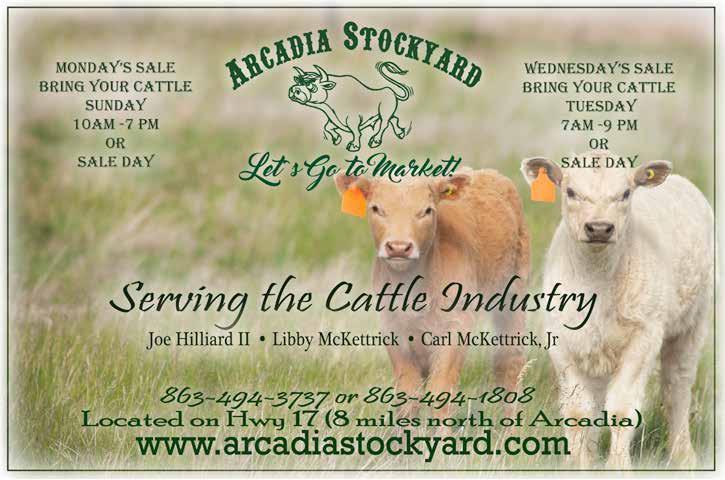

WWW.INTHEFIELDMAGAZINE.COM INTHEFIELD MAGAZINE August 2023 45 PAGE

WWW.INTHEFIELDMAGAZINE.COM INTHEFIELD MAGAZINE August 2023 46 PAGE
A Closer Look by Sean Green Azalea Caterpillar (Datana major)
I went hiking in the Chassahowitzka Wildlife Management Area in Hernando County recently to check out some of central Florida’s caves. In hopes of discovering new caves, we got off the beaten path and saw quite a lot of wildlife. Though our trip was not centered upon finding any specific species, we had hoped to find a Hickory Horned Devil caterpillar (Citheronia regalis) or at least a Giant Swallowtail Caterpillar (Papilio cresphontes) because…. well, the larvae look like bird droppings and adults are the largest butterfly in North America, two cool factors that make finding these caterpillars worth the effort. Though we did not find any of the caterpillars we would have liked to see, we were a little surprised to find what appeared to be Azalea caterpillars (Datana major). When I hear talk of Azalea, it’s usually in terms of a prized ornamental plant someone is trying to keep alive. I do not know much about the plants, but caterpillars in the Datana genus are easily recognized and kind of a big deal. This month we will take a closer look at the Datana caterpillar, commonly known as the Azalea caterpillar. You might find them in your own back yard if you grow Azalea, or any of the alternative host plants these critters like to eat.
The Azalea caterpillar is a member of the Notodontidae family of moths, commonly known as “Prominent” or “Back Tooth” moths; a family that consists of around 3,500 species. These moths are medium-sized nocturnal moths and are generally pretty drab in color, typically shades of gray, olive green, tan or brown. Some may have black spots or streaks, but moths in this family are not particularly visually stunning. These moths can be found worldwide but most are found in the new world tropics. This species scientific name Notodontidae translates to back(not) tooth (odont), the back-tooth moth because of a prominent tuft of hair on the back edge of the four wings that tends to stick up, resembling a tooth when the adult moth is at rest with its wings in a tent shape.
The adult moths do not feed and remain alive only long enough to mate. Once mated adult female moths lay their eggs on the underside of the host plants leaves in clutches of up to 100 eggs. For most of the United States the species has only one generation per year, however, in Florida’s tropical climate we can see two or more generations per year, the most prominent populations occur throughout North America between July and October. The caterpillars, rather than the adult moth, are what makes this species a big deal. When the eggs hatch the tiny caterpillars emerge and immediately begin to feed on the leaves of their host plant Azalia and it is their eating habits that make this species so remarkable. For the first few instars, the young caterpillars only skeletonized the leaves, but as they grow, they will need more nutrition to prepare for pupation and begin to eat the entire leaf. This may not seem like a big deal if you are imagining a few caterpillars on your plant, however, unlike many other caterpillars, the azalea caterpillars do not wander around as individuals, but rather, feed on the host plant as a group and consequently
can strip the host plant clean of its leaves seemingly overnight. Although this rarely kills the host plant it can slow its growth and is certainly unsightly for anyone that cherishes azaleas.
Although these caterpillars prefer to feed on Azalea they are known to also feed on blueberries, apple trees, red oak, witch hazel, crabapple and sumac. The caterpillars are easy to recognize, though their appearance changes slightly as the caterpillar grows. The younger caterpillars are reddish brown in color and have yellow stripes along the length of its body. In the latter stages of the caterpillar’s development it will grow to be two inches long and its coloration will change to black with yellow or white stripes and a red head. A fun characteristic of these caterpillars that can easily be observed is their group defensive posture. When they feel threatened, they assume a defensive posture by arching their back into a c shape, not just one caterpillar, but the entire group of caterpillars will assume this defensive posture and it can be quite entertaining to watch. They do not sting and can safely be touched or handled for mechanical removal from the host plant.
Physically removing the caterpillars from the plant is always my preference over toxins, however this species feed in very large groups and hand removal may not be practical. It’s important to remember the natural enemies that help control these caterpillars in the wild live in the leaf litter and soil. When we grow the host plant in our gardens and homes we may inadvertently disturb the habitat these natural enemies need to survive when we mulch and rake the soil to keep our gardens neat. Again, natural enemies are not always a viable solution because when the food source (caterpillars) diminish, so do the natural enemies until the food source becomes abundant enough to repopulate the natural enemies. A popular alternative to just letting nature take its course is the use of the microbial insecticide BT which is the bacteria (Bacillus thuringiensis), commonly marketed as a control agent for caterpillars because it is less likely to effect beneficial insects as much as popular toxins.
Another solution, (and one of my favorites) is the use of Diatomaceous Earth. It is non-toxic because it is little more than the fossilized exoskeletons of microscopic diatoms, a single cell algae that is distinguished as being the only organism on our planet with cell walls composed of silica. This is effective because silica is a quartz-like compound that is as sharp as glass. Diatomaceous earth works by literally cutting the insect from the bottom side as it walks across the tiny shards of silica.
Take a closer look at your garden this month, as we move into most active period for the Azalea caterpillar. If spotted in time you have a good chance of saving your Azalea during the next couple months that we should see large populations of this caterpillar.

WWW.INTHEFIELDMAGAZINE.COM INTHEFIELD MAGAZINE August 2023 47 PAGE
Shawn has won numerous state and national awards, including the Farm Credit/Florida Association of County Ag Agents Young Professional Award, the National Association of County Ag Agents Search for Excellence Award (twice), the Achievement Award, and the Distinguished Service Award for Excellence. He is currently serving as the President of the Florida Association of County Agents and has served in leadership capacities on the Boards of Florida Nursery Grower and Landscape Associations in Polk and Hillsborough Counties, the Florida Society of Horticulture Science, and the Extension Professional Association of Florida.
Shawn’s dedication to youth education is evident through his role as the plant leader in the Turkey Creek 4-H Club and leading the Strawberry Festival Youth Plant Show and Sale Committee. Under his guidance, participation in the Youth Plant Show and Sale has surged over the years. The youth auction proceeds have grown from approximately $30k in 2009 to a remarkable $148k this past year. Shawn’s innovative approach involved introducing improvements to enhance how kids showcase their plants and creating new awards that encouraged limited resource youth participation.
In addition, Shawn takes the initiative to organize and host the FFA Nursery, Landscape, and Floriculture Career Development Event for middle and high school agriculture students and their teachers. This engaging event spans an entire day and comprises a series of competitive activities in landscaping, floriculture, and nursery production.
This year, Shawn helped launch the Hillsborough County Youth Fruit and Vegetable Show, empowering students to nurture their passion for growing edible crops.
When Shawn is not working, he loves to spend time with his beautiful wife of 18 years and their six children, ranging in age from 7 to 16. He is a volunteer basketball coach at the Plant City YMCA and a baseball coach at Plant City Little League. Shawn is also deeply involved with Nativity Catholic Church and School in Brandon, where he volunteers as a bus driver, teaches youth formation classes, and assists with men’s Emmaus retreats. He also played a vital role in establishing the school’s very own vegetable garden. He also is a stateranked, age-group competitor in triathlon and likes to play disc golf, fish, and camp with his kids.
Shawn’s journey, from a student with a passion for agriculture to an accomplished farmer and now an esteemed agriculture educator, exemplifies his unwavering dedication to the field. Shawn’s passion for educating and empowering others in the field of agriculture is evident in his tireless efforts as an extension agent.
LIFE OF SERVICE AWARD Tim Cribbs
Tim Cribbs was born in Plant City and grew up in Turkey Creek with his parents Haverd and Geneva Cribbs. At an early age, Tim learned what hard work was by pulling a fuel hose for his dad’s company making deliveries around the Plant City agriculture community. In the middle of the night and in the freezing cold, he would come to the rescue of many of his friends and neighbors. He developed many lifelong relationships with these people that would come back to help once he began teaching. Tim discovered his love for agriculture and the FFA starting in 7th grade at Turkey Creek.
As a Plant City High School student, he was active in FFA where he served as an officer, competed on teams and raised/showed steers. He often expressed how his agriculture teachers got him “turned on” to agriculture and pointed him in the direction of teaching agriculture. John Altizer, John St. Martin, Don Vaughan, Ray Clark, Oscar Lastinger, and Buck Simmons gave him an appreciation and a love for agriculture. Tim served as the Hillsborough County Federation Secretary and President. After graduating from Plant City High School in 1979, he attended Hillsborough Community College and transferred as a junior to The University of Florida in the College of Agriculture and Life Sciences. Upon entering the University of Florida, he pledged Alpha Gamma Rho and was involved in the Agriculture Education Society and served as Vice-President. While at the AGR house, he was introduced to Suzanne Walden. She caught his eye and they began dating and were married in 1985.
His first teaching assignment was at Leto High School in Tampa. After long commutes for a year, Tim was excited when he was asked to teach with his former junior high teachers and mentors, John Altizer and John St. Martin along with Mike Drake. He learned from the best how to create an award-winning Strawberry Festival FFA booth, train CDE teams with fervor and perfect his craft for teaching.
Then Tim joined Plant City High School in 1990. Here he learned many skills and developed a winning attitude with every contest he coached. There he developed a love of coaching many teams, especially Parliamentary Procedure and Forestry. When Tim moved to Tomlin it quickly became a “powerhouse junior high” in the county. High school was still his favorite age group and he yearned to work with that age again. Tim was sought out by principal, Ron Frost to open Durant High School. Starting with four teachers and soon moving to seven the legacy was born and agriculture and FFA were taken to new heights the Durant community hadn’t experienced or expected.
Fast forward 28 years, 20 state officers and over 80 state titles. Along with these he also coached two national public speaking winners, one in Extemporaneous and one in Prepared, a national top four in Nurs-
WWW.INTHEFIELDMAGAZINE.COM INTHEFIELD MAGAZINE August 2023 48 PAGE
continued from Pg 43
ery Landscape Proficiency and numerous National Gold, Silver, and bronze winners in Parliamentary Procedure, Forestry, Agriculture Mechanics and Dairy. On a personal level, he was honored as Farm Credit’s and the Plant City Chamber’s 2007 Ag Educator of the Year along with three nominations as Teacher of Teachers for the University of Florida. Tim’s leadership and strong work ethic were instrumental from the ground level in making Durant a premier FFA chapter in the nation and was near to his heart as he completed 39 years of teaching! In June, at the 95th Florida FFA Convention Tim was inducted into the Florida FFA Hall of Fame.
Tim passed away in December of last year leaving behind his wife, Suzanne, their two children Josh and Caitlin, four grandchildren, and a wealth of friends.
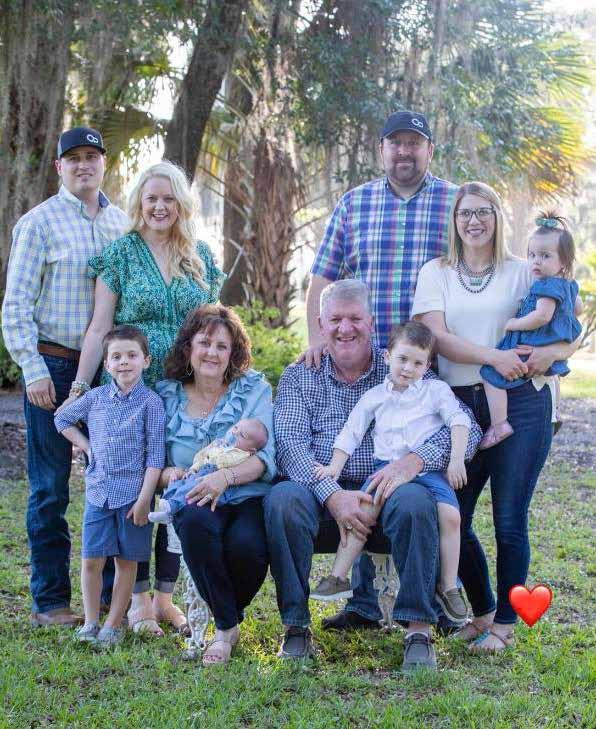

WWW.INTHEFIELDMAGAZINE.COM INTHEFIELD MAGAZINE August 2023 49 PAGE
HOPEWELL HERITAGE FARM
By Libby Hopkins
Tracy Crist has always worked with animals. “Primates in a career perspective, horses and cattle at home and the typical dogs, cats, and chickens,” Crist said. Crist and her husband are the owners of Hopewell Heritage Farm in Plant City. “My husband’s family was one of the original homesteaders of the Hopewell community,” Crist said. “Charlie Wiggins is my husband’s great-grandpa and the name of our road. He built the house we live in, in 1914 for his wife. They have always been in agriculture from oranges to farming and cattle.”
The couple moved onto a 58-acre farm in 1995 to help her husband’s grandmother and to settle down. “We help with the cows and the orange groves,” Crist said. “In 2020, all but 5.7 acres were sold. My husband’s horse training business was also put to rest at that time. It was also then that we had to adjust to a new type of livestock. Sold the cattle, sold the horses, and started changing our mindset.”
Their new mindset was Kunekune pigs. “5.7 acres is not much land for traditional livestock, so after researching and visiting farms we decided to try Kunekune pigs in early 2020,” Crist said. “Because it would be my daughter and myself operating the farm, the animal chosen needed to be manageable by the both of us. We
are different from most hog farms in that our pigs are smaller and graze. They root so minimally that people who visit don’t even know we have pigs. Our goal was always for pork, though these pigs are so sweet-tempered and mellow that many have them for pets. Our stock was chosen for the larger type of Kunekune that reach butcher weight in one to one and a half years on minimal commercial feed. They get the majority of their needs by the grazing they do. Because of their grazing nature, the meat is different than traditional pork as well. It’s red, marbled, has higher Vitamin D and a better balance of omega three and six than their confinement counterparts.”
The goal of Hopewell Heritage Farm is to support themselves and their animals in a sustainable, healthy, and inclusive way. “Our Heritage Landrace Kunekune pigs are raised for meat and breeding stock,” Crist said. “All animals will be pasture-raised using rotational grazing methods.
Kunekune pigs are known for their bacon and sausage primarily, but because they are a lard breed they also provide great lard for cooking, candle making, and soaps. “They are the perfect homestead pig because of the lard and is truly a nose-to-tail breed,” Crist said.

WWW.INTHEFIELDMAGAZINE.COM INTHEFIELD MAGAZINE August 2023 50 PAGE
“Utilizing the whole animal is the only way to truly honor and appreciate the gift that they give to us at each harvest. That is our goal. Use every bit of the animal that we can. Depending on how they are raised and fed, the lard amount varies, but we keep our Kunekune on the leaner side but still qualify as ‘round’ as the Maori people named them. Kunekune means round and fat in the New Zealand Maori language. They gain weight easily so minimal feed is necessary but swine feed is given daily to cover the holes that our grazing in Florida’s soils can’t supply.”
Crist is AKKPS (American Kunekune Pig Society) and IKHR (International Kunekune Hog Registry) registered. “I also work with other farms out of state that are doing data on the carcass merit of Kunekune pigs as an ongoing mission of improving the breed,” Crist said. “I only sell quality, breed standard pigs to those that are looking to raise their own pork. Pigs that don’t make that cut are put into my meat herd. Too many people are now crossbreeding KK in hopes to get a faster-growing pig but with the same sweet nature as a Kunekune and many are indiscriminately breeding just to sell and make money. I vet all those that want to buy a pig from me because I don’t want to support that behavior. Unwanted pigs and other animals are everywhere because of this.”

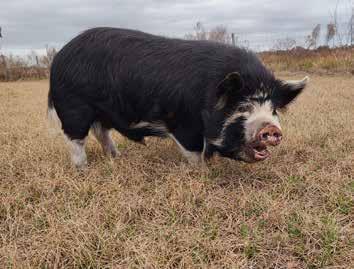
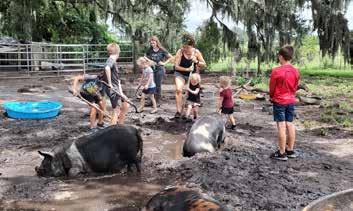
If you ask Crist about her favorite part of owning her farm, she’ll tell you it’s working with her family. “I love being home to be with my family,” Crist said. “I love being active and really like that I can continue to manage animals into my older age. Knowing where my family’s food comes from is a huge part of why we do what we do.”
If you would like to learn more about Hopewell Heritage Farm, you can visit their Facebook page at www.facebook.com/HopewellHeritageFarm.
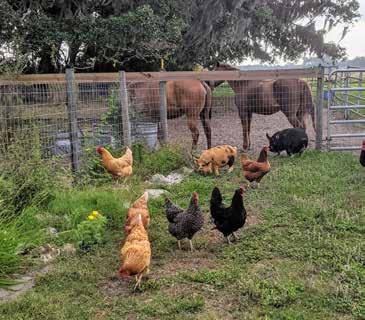
WWW.INTHEFIELDMAGAZINE.COM INTHEFIELD MAGAZINE August 2023 51 PAGE
FLORIDA STRAWBERRY SEASON UNDERWAY
By Jim Frankowiak
The annual Florida strawberry season is underway with more than 12,000 acres planted in the greater Plant City area. “Popular varieties this season include Brilliance, Medallion™, Sensation™ and Florida Pearl™,” said Florida Strawberry Growers Association (FSGA) Executive Director Kenneth Parker.
The industry annually has an economic impact of more than $1 billion as it provides strawberries nationally from late November through April, making Plant City “The Winter Strawberry Capital of the Nation” during that timeframe.

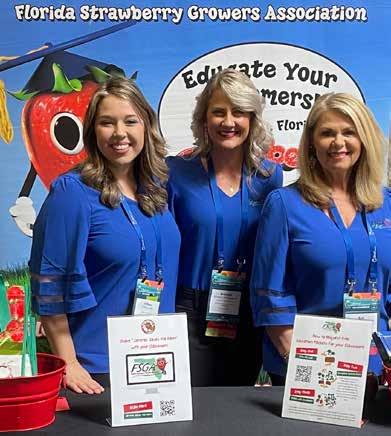
In addition to the varieties noted, “there are two new varieties being trialed this season on grower farms,” said Vance Whitaker, Ph.D., who leads strawberry breeding at the University of Florida, Institute of Food and Agricultural Sciences (UF/IFAS) Gulf Coast Research and Education Center (GCREC) at Balm. Those selections, which will be named if they successfully complete the trials and will be available to growers next season, have specific characteristics of benefit to growers.
“The first is more tolerant to Neopestalotiopsis (aka Pestalotia), a new disease that has a negative effect on all of the plant, including the fruit,” said Whitaker. “The other trial variety is similar to Brilliance with larger fruit size and an improved disease resistance package.”
The FSGA, which represents strawberry growers locally and nationally, also has some news for the season. “We are continuing to emphasize the health benefits of eating fresh strawberries, as well as helping people of all ages understand where their food comes from,” said the FSGA’s Director of Marketing Sue Harrell. To that end, the FSGA’s outreach initiatives include a digital emphasis and a revised website. “We
are also expanding our partnerships with tourism destinations in Florida,” said Harrell. “People come from all over the country to visit Florida theme parks, and working with them is both a productive and cost-effective way to tell our story.”
“Jammer,” the FSGA’s mascot, has a new look that will be seen through its broad range of outreach activities from visits to schools and community events. “The new Jammer is a bit more streamlined looking and I guess you could say that comes from eating locally grown, health foods,” suggested Harrell. In addition to in-person appearances, Jammer is featured in a range of video educational presentations designed to tell youngsters about strawberries and their nutritional value. “We also offer educational materials, including a coloring book that teachers can use with their students,” she said.
“I would encourage people to visit our website for more information about Florida-grown strawberries,” said Harrell. The site can be reached at www.floridastrawberry.org. In addition to a wide range of information, the site offers a broad range of “Strawberry Sue” recipes from starters, drinks, and salads to desserts and main courses. “We are continually adding new recipes,” said Harrell.
The FSGA will continue to offer scholarships to encourage young men and women to continue their education beyond high school. The FSGA is accepting scholarship applications until September 8. More information is available on the FSGA website. The FSGA has awarded more than $540,000 in scholarships since the program was introduced in 1983.
For more information about Florida-grown strawberries and various programs of the FSGA, visit. floridastrawberry.org
WWW.INTHEFIELDMAGAZINE.COM INTHEFIELD MAGAZINE August 2023 52 PAGE
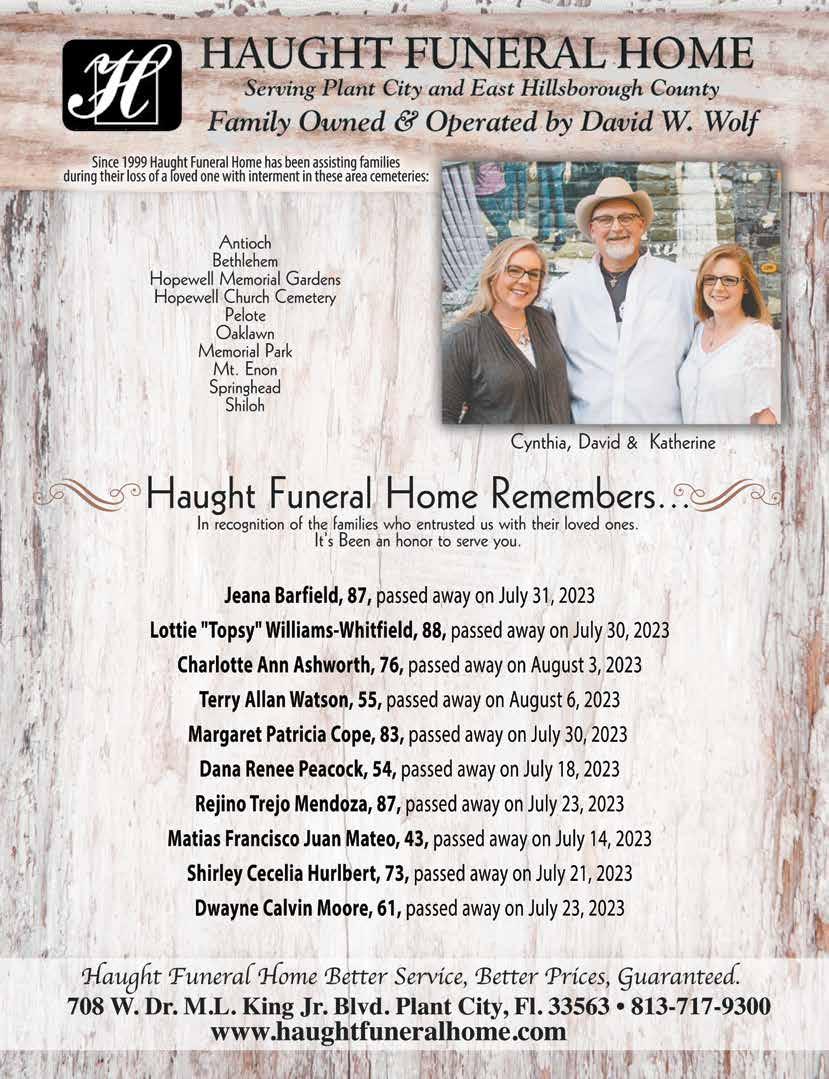
Please make plans to attend the
81st Annual
HILLSBOROUGH COUNTY FARM BUREAU

ANNUAL MEETING
OCTOBER 5TH AT 6:30PM
FLORIDA STRAWBERRY FESTIVAL GROUNDS
TECO EXPO HALL
Event Includes:
Two( 2) Steak Dinners per Family
Additional dinners are $20.00 per guest. Children under 12 receive a free hotdog dinner
Youth Speech Contest Winner
YF+R Cake Auction and 50/50 Raffle
Award Ceremony
Board of Directors Election
THANK YOU TO OUR PRESENTING SPONSORS


BOARD OF DIRECTORS

WWW.INTHEFIELDMAGAZINE.COM INTHEFIELD MAGAZINE August 2023 54 PAGE
R S V P T O 8 1 3 . 6 8 5 . 9 1 2 1 O R K A Y L E E . P O P P E L L @ F F B F . O R G
Dennis Carlton Jr, President; Carl Bauman, Vice-President; Tony Lopez, Treasurer; Madison Astin Salter, Secretary; Jake Cremer, Brittany Coleman, Travis Council, Tiffany Dale, Drew Futch, Rep. Lawrence McClure, Casey Runkles, Michelle Williamson, Sammi Wilcox, Kaylee Poppell, Executive Director




WWW.INTHEFIELDMAGAZINE.COM INTHEFIELD MAGAZINE August 2023 55 PAGE Auto Services “We Are A FULL SERVICE Garage” 3159 Hwy. 60 East 3 miles east of Brandon Serving Brandon Since 1971 www.brandonautoservices.com (813) 689 - 8255 • Body Shop • Used / Reman Transmission • Engine Diagnostic / Tune Up • Maintenance/Repairs • CV Axles • Drive Shafts • AC Repair • Alternator / Starter • Brakes Inc. GUARANTEED USED PARTS • Large selection of Used Tires • New and Used Glass Installed 2 Year Part Replacement & Labor Guarantee!
FROM THE SCIENTIFIC FIELD
By J. Scott Angle
For some of the same reasons plants thrive here, so do plant diseases. We at UF/IFAS help you grow food without fungus, vegetables without viruses.
It takes a team of good scientists with a strong leader. That’s why my decision to appoint Dr. Mathews Paret as the new chair of our Department of Plant Pathology is an important one.


Most relevant to you, he’ll be Natalia Peres and Gary Vallad’s boss, though Paret is in Gainesville and Peres and Vallad are at the Gulf Coast Research and Education Center (GCREC). In addition, if you send samples to our plant diagnostic clinics in Balm, Immokalee, Homestead, Gainesville, or Quincy, Paret oversees the people who get you fast, accurate analyses.
Paret has faculty members at nine sites outside of Gainesville, and one of the central commitments he made during his interviews was to increase collaborations between Gainesville and the research and education centers. He’ll do that in part by spending time at all RECs where he has faculty members, including GCREC.
Paret’s own groundbreaking research has provided Florida vegetable and ornamental crop producers significant savings and profits. He has mentored dozens of students and promises to provide professional and personal development opportunities to students and faculty. Paret has distinguished himself in Extension as director of the North Florida Research and Education Center’s (NFREC) Plant Disease Diagnostic Clinic and in developing the U-scout program to train agents in on identification and management of plant pathogens.
Paret’s commitment to international engagement will be crucial in continuing to identify and manage threats
to Florida agricultural production long before they arrive here, whether through hurricanes, or plants and seeds that arrive here daily.
Plant Pathology also delivers key expertise to improve plant breeding so that Vance Whitaker’s strawberry varieties, for example, can resist or tolerate disease.
Paret joined UF/IFAS in 2009 as a post-doctoral fellow in Quincy at NFREC, became an assistant professor in 2010 and earned tenure in 2017, and this summer was promoted to full professor. While his publication record is impressive, he considers his proudest achievements as the positive impacts on producers.
Rose Loria led Plant Pathology for nearly 12 years and helped make it one of the nation’s finest universitybased departments of its kind. Paret will build on that success by helping his faculty foster your success.

WWW.INTHEFIELDMAGAZINE.COM INTHEFIELD MAGAZINE August 2023 56 PAGE
Scott Angle is the University of Florida’s Vice President for Agriculture and Natural Resources and leader of the UF Institute of Food and Agricultural Sciences (UF/IFAS).
Dr. Mathews Paret



WWW.INTHEFIELDMAGAZINE.COM INTHEFIELD MAGAZINE August 2023 57 PAGE
FLORIDA FARM BUREAU YOUNG FARMERS AND RANCHERS STATE MEETING
By Jim Frankowiak
The 2023 Florida Young Farmers and Ranchers (YF&R) Leadership Conference was held in Orlando, Florida on July 7 - 9, at the Orlando World Center Marriott. During the conference, members attended Awards Banquets, listened to keynote speakers, and enjoyed a live concert by Emmet Stevens Jr.

Attendees also had the option to tour four local farms ranging from seedling production to beef cattle. Members also enjoyed competitive events, the annual corn hole and volleyball tournaments as well as a belly flop competition.

Hillsborough County YF&R attendees were Chapter Co-Chairs Amber Boykin and Brittany Coleman Along with members Clay Joyner and Christian Bentrovato.
During the annual meeting, Hillsborough County Young Farmers and Ranchers received the County Young Farmers and Ranchers Activity Award recognizing their involvement throughout the Hillsborough County community and highlighting their members.
Coleman also received the YF&R Scholarship which covered all expenses to attend this conference.
“Our members look forward to this annual event that is held to gather Young Farmers and Ranchers from across the State of Florida,” noted Boykin. “The weekend was filled with exceptional networking and professional development opportunities.”
Young Farmers & Ranchers between the ages of 18-35 who have a desire to network, share ideas, participate in community projects, and hone their leadership skills are invited to join the Hillsborough County YF&R. “The Florida Farm Bureau has an array of opportunities for this group of young agriculturists to become strong leaders for the future of agriculture,” said Boykin. “Hillsborough YF&R would love to expand with new members and further the opportunities within this program.”
Interested young farmers and ranchers in the county are encouraged to reach out to Co-Chairs, Amber Boykin and Brittany Coleman for more information or email info@hcfarmbureau.org. Be sure to follow the YF&R page on Instagram: @hillsborough_yfr and
Facebook: Hillsborough County Young Farmers and Ranchers.
WWW.INTHEFIELDMAGAZINE.COM INTHEFIELD MAGAZINE August 2023 58 PAGE

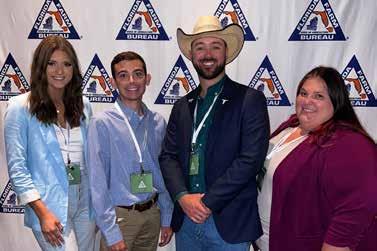
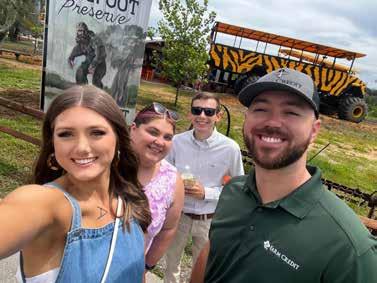

WWW.INTHEFIELDMAGAZINE.COM INTHEFIELD MAGAZINE August 2023 59 PAGE
Recipes
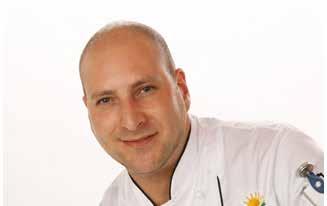
Courtesy of the Florida Department of Agriculture and Consumer Services.

Florida Guacamole

Ingredients q q
2 Florida avocados, pit removed and mashed
1 Florida tomato, diced small
2 Florida Key limes, juiced
¼ red onion, diced small
2 tablespoon fresh cilantro, roughly chopped
½ teaspoon cumin
Several dashes hot sauce (optional)
Sea salt and fresh ground pepper, to taste
PREPARATION
Mix all the ingredients together in a large bowl and stir to combine. Taste and adjust seasoning as needed. Store in an airtight container in the refrigerator.
Veggie Stuffed Florida Mushrooms
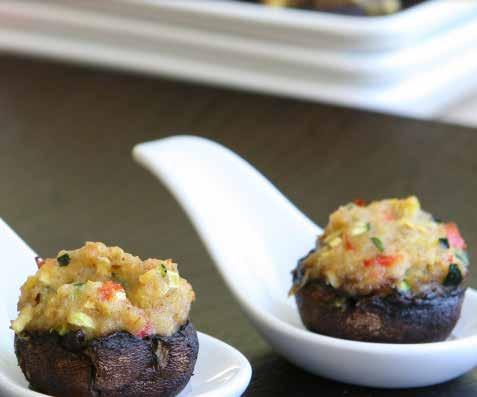
Ingredients q q
24 medium-sized Florida mushroom caps, rinsed and stems removed
1 cup Florida zucchini, finely diced
½ cup Florida onion, finely diced
½ cup radish, finely chopped
½ cup breadcrumbs
½ cup fresh basil leaves, chopped
3 tablespoons Parmesan cheese
1 egg
1 teaspoon freshly ground pepper
PREPARATION
Preheat oven to 375 degrees. Combine all ingredients except mushrooms; mix well. Stuff mixture into mushroom caps and place stuffed mushrooms on a large baking pan. Bake until mushrooms soften and mixture begins to brown, approximately 15 minutes.
WWW.INTHEFIELDMAGAZINE.COM INTHEFIELD MAGAZINE August 2023 60 PAGE
Chef Justin Timineri

BUILDING SUPPLIES
METAL ROOFING
Thousands of 8ft. & 10ft. sheets. In Stock. Prices from $6 and up. Custom lengths available. 813-752-7088 ask for Ferris
ALUMINUM
We have all your aluminum needs! Screen Room, carports & awnings. Call Blake (813) 752-3378
WINDOW SCREENS
We make window screens of all sizes available in different frame colors. Call Ted(813) 752-3378
CABINETS
All wood kitchen cabinets. All wood vanities. Custom made to your size. Call Chris 813-752-3378
VINYL SIDING
Many colors and styles to choose from. Ask for Ted. 813-752-3378
MOBILE HOME SUPPLIES
Everything you need under ONE roof! Call Blake 813-752-3378 NEW, USED & ABUSED.
CALL FOR A WINDOW QUOTE.
We are a MI Windows dealer. Our windows are energy star, lifetime warranty. Call Broke & Poor 813-752-3378
FARM EQUIPMENT
I4 POWER EQUIPMENT
Trade-Ins Welcomed, Service Department Available. Exit 22 • S. Frontage Rd. Plant City 813-752-4459
JOHN DEERE
Looking for your new tractor? Come see us at Everglades Farm Equipment. evergladesfarmequipment.com
2805 SR 60 West, Plant City 813-737-1660
OVERSTOCK SPECIAL
Barn doors starting at $80.00 Call Ted 813-752-3378
2016 MAHINDRA 1526
Tractor with loader 4x4 HST transmission, turf tires. 1585 hours. $12,500 Call Alvie 813-759-8722
10’ BUSHHOG 3210
Like NEW! Heavy duty barn kept. $8,000 Call Bobby 863-424-9221
1989 JOHN DEERE
770 2 wd tractor with 5' mid mount mower. $3,750 ask for Alvie.
813-759-8722
IH FARMALL 140 HI-CROP
With front and rear cultivators, fertilize attachment, new tires. $7500.00 Call Alvie 813-759-8722
CITRUS PACKING HOUSE
Citrus packing house equipment for sale. Mikey Fertilizer Spreader, two wind machines. Call 863-324-2833
USED BALDOR-RELIANCE
Used 7.5 HP pump motor and 119 gal. holding-tank. Call LLCA 813-382-8382 FOR
SALE
OLD ANTIQUE BLUE STOVE
Bread warmer, chrome trim. You have got to see it to believe it! Call Ted for more details. 813-752-3378
DOORS & WINDOWS SPECIAL ORDER
No upcharge. House & Mobile Home. Many standard sizes in stock. Ask for Blake. (813) 752-3378
KITCHEN CABINETS & VANITIES
Get quality all wood cabinets for less than the BIG Box STORES! Call Today! Ask for Blake. (813) 752-3378
JOBS
MECHANIC NEEDED
Agricultural equipment. Pay with benefits based on experience. Call David 863-537-1345 or Alvie 813-759-8722
PARTS COUNTER HELP
Wanted for parts look up and sales. Experience in the agriculture equipment service. Speak with Alvie. 813-759-8722
LAWN EQUIPMENT/ SUPPLIES
USED HUSQVARNA
Lawn tractor with 48" deck. Bagging system included. In good condition.
$995.00 Call Alvie 813-759-8722
USED ZERO TURN
Zero turn mowers, several to choose from. Call Alvie 813-759-8722
WANTED
WANTED OLD FISHING TACKLE
Wood lures, Bamboo fly rods, Bagley lures. Any old fishing collectible stuff. Call 863-559-8520
PRODUCE
FRESH PRODUCE
Forbes Road Produce. Open everyday from 7:30am - 8pm. Forbes Rd. & I-4 @ exit 17. Come out and see us!
MISC.
FREE Wooden Shipping Pallets
All sizes! Call Alvie 813-759-8722
24 HOUR SERVICE
Coggins Plumbing licensed • bonded • Insured. www.cogginsplumbing.com 813-643-7173
FARM BUREAU INSURANCE

We have you covered! Call us today. 813-752-5577
ALAN’S AIR CONDITIONING
Residential, Commercial Sales SVS & Repair. Legendary service for over 20 years! 813-752-0821
SHOWER STALLS - FIBERGLASS
Scratch and dent shower stalls - fiberglass perfect for hunting camps. $150 you pick! Call us! 813-752-3378
Follow
Follow

WWW.INTHEFIELDMAGAZINE.COM INTHEFIELD MAGAZINE August 2023 62 PAGE Info@inthefieldmagazine.com Classifieds Tel: 813.759.6909 TRADE • BUY • SELL? Since 2004 In The Field has been Hillsborough and Polk Countys #1 Agriculture Magazine. Call Us at 813-759-6909 to place your Ad Today!
Us on Instagram @inthefieldmagazine
Us on
Facebook @inthefieldmagazine
Access In The Field Magazine, anywhere! www.inthefieldmagazine.com • Current Issues • Back Issues • And More.
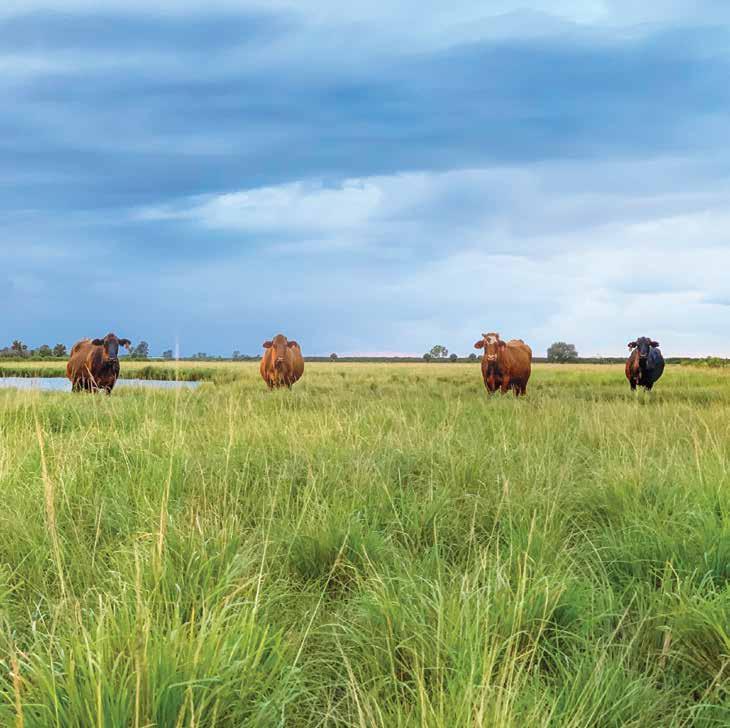
WWW.INTHEFIELDMAGAZINE.COM INTHEFIELD MAGAZINE August 2023 63 PAGE Cover More Ground with CKP Let CKP Help You Protect Your PRF Our PRF specialists are trained to help you analyze complicated insurance data so you: • Protect your land and livelihood against potential losses during times of drought. • Make the most informed decision for your business. Why now? • Very affordable – Government subsidized • Premiums are not due until October 1 • No adjusters needed • No claim forms • Protects your cash flow “Anyone can sell you a policy. But CKP invests the time to understand your individual needs and develop a strategy that will produce the best coverage results.” The USDA Risk Management Agency helps protect your Pasture, Rangeland, and Forage (PRF) from the elements. 877-CKP-INS1 ( 877-257-4671 ) ckpinsurance.com CONTACT YOUR CKP PRF SPECIALIST TODAY

WWW.INTHEFIELDMAGAZINE.COM INTHEFIELD MAGAZINE August 2023 64 PAGE

























 -Dennis Carlton Jr. - President
-Dennis Carlton Jr. - President
 HILLSBOROUGH COUNTY
HILLSBOROUGH COUNTY
 Dennis Carlton, Jr.
Dennis Carlton Jr.
Dennis Carlton Jr. - President
Dennis Carlton, Jr.
Dennis Carlton Jr.
Dennis Carlton Jr. - President












































 By Jim Frankowiak
By Jim Frankowiak





 Lynn Barber, Florida-Friendly LandscapingTM agent, UF/IFAS Extension Hillsborough County
Lynn Barber, Florida-Friendly LandscapingTM agent, UF/IFAS Extension Hillsborough County






















 By Jim Frankowiak
By Jim Frankowiak
















 By Jim Frankowiak
By Jim Frankowiak




















































